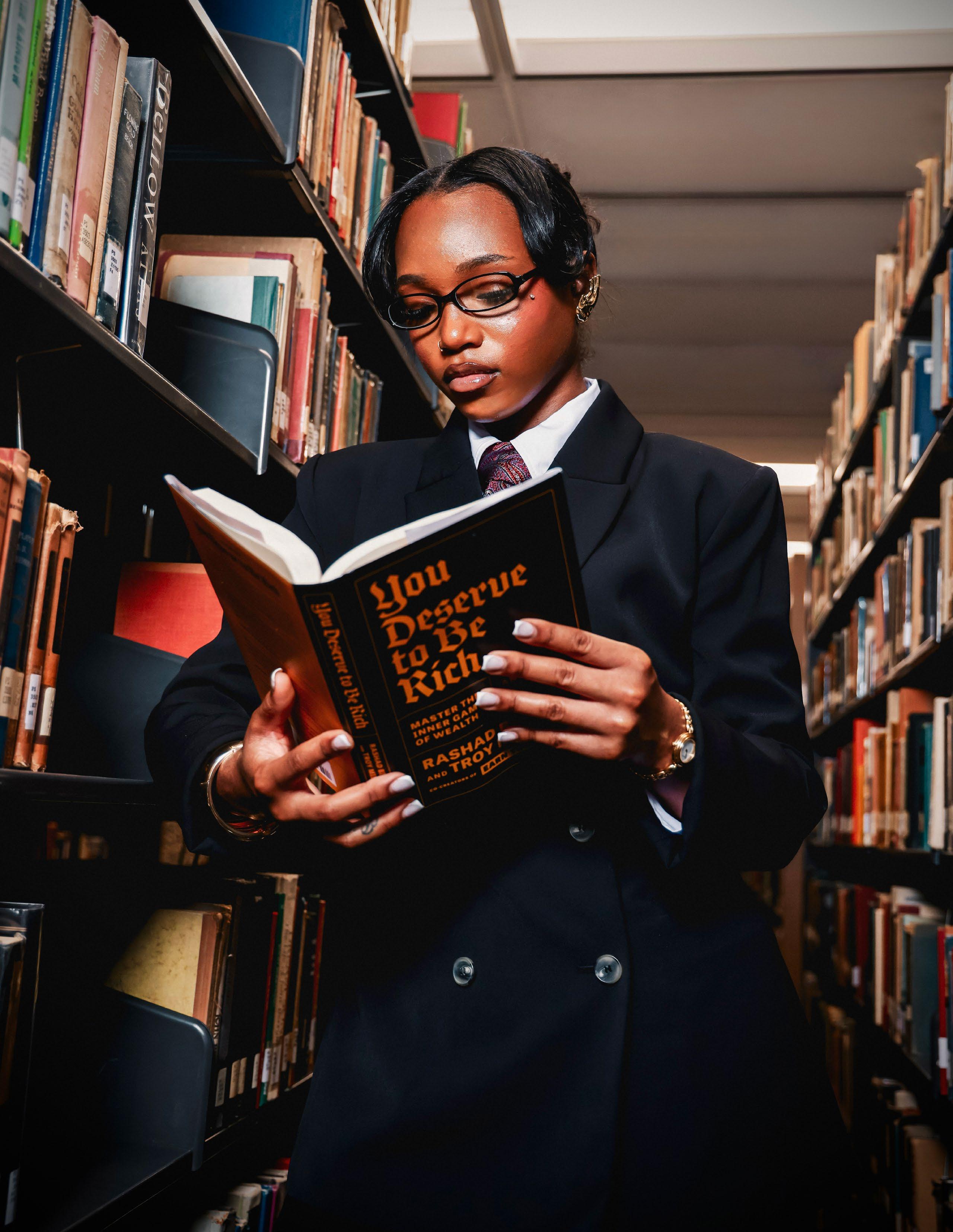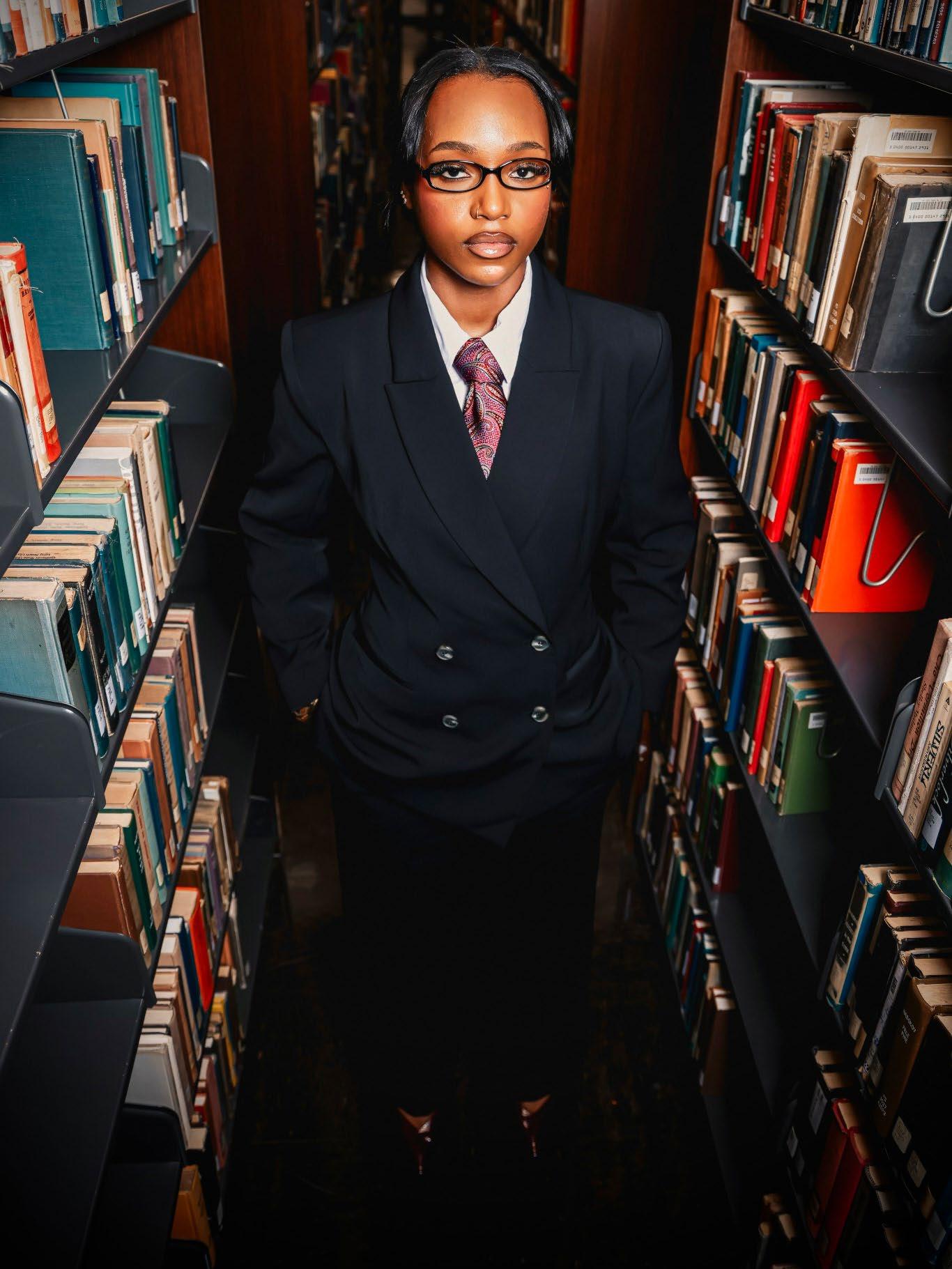

NUBIAN
Editor in Chief: Jaylen Walker
Design Director: Jaylen Walker
Feature Editor: Jaylen Walker
Copy Editor: Jaylen Walker
Fashion Editors: Jaylen Walker
Special Thanks: Elena Eberhard, Stylist & Designer Drina Johnson, Ryan Lacefield, Dylan, etc.
Cover Image:
Jacket by Open Edit.Pants by Open Edit. Photography by 1KFilms. Styling by Jaylen Walker. Model:Dylan
Facing Page:
Jacket by Open Edit.Pants and shorts by Open Edit.Photography by 1KFilms.Styling by Jaylen Walker. Model:Dylan

Find us online at: magazinename.com @magazinename
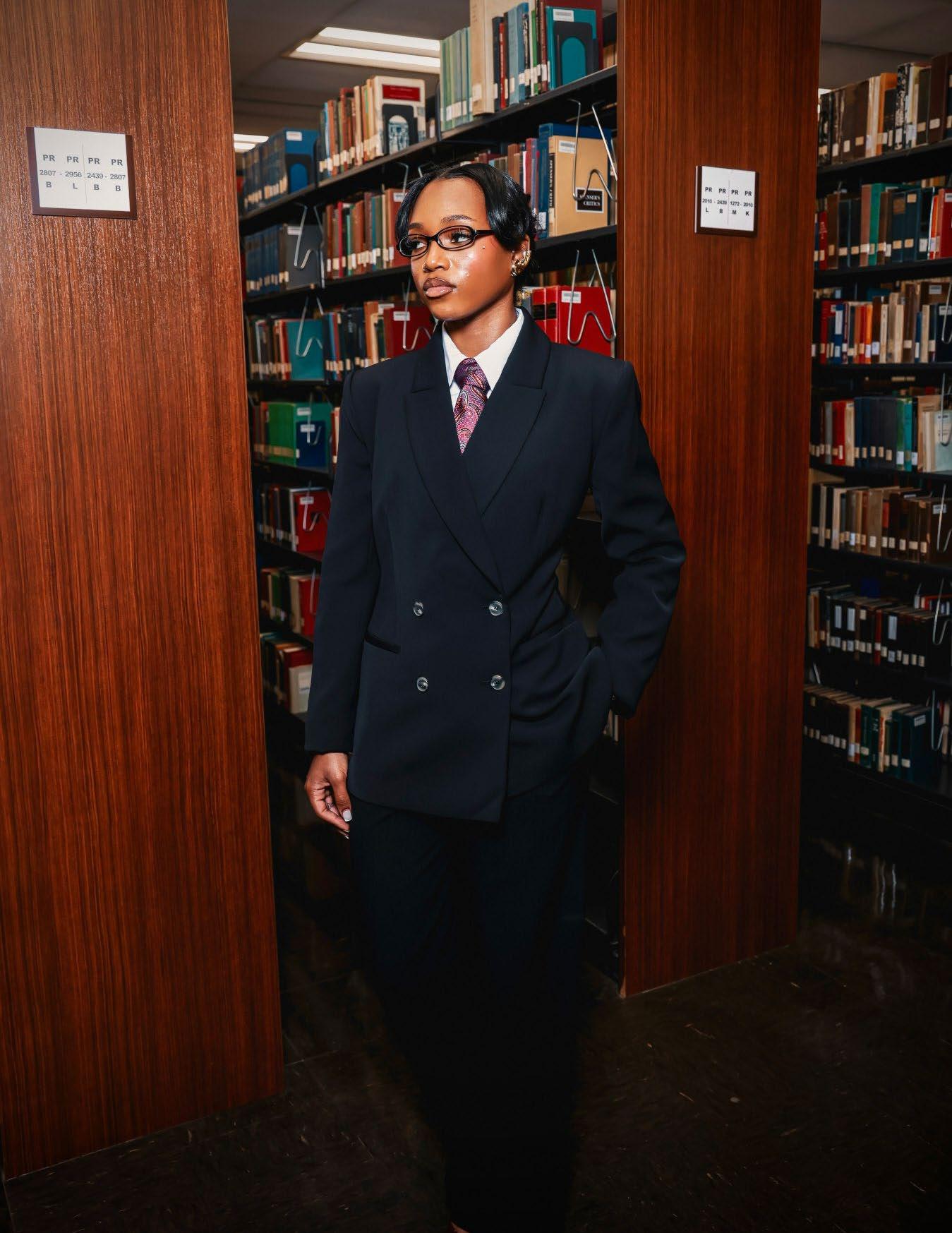

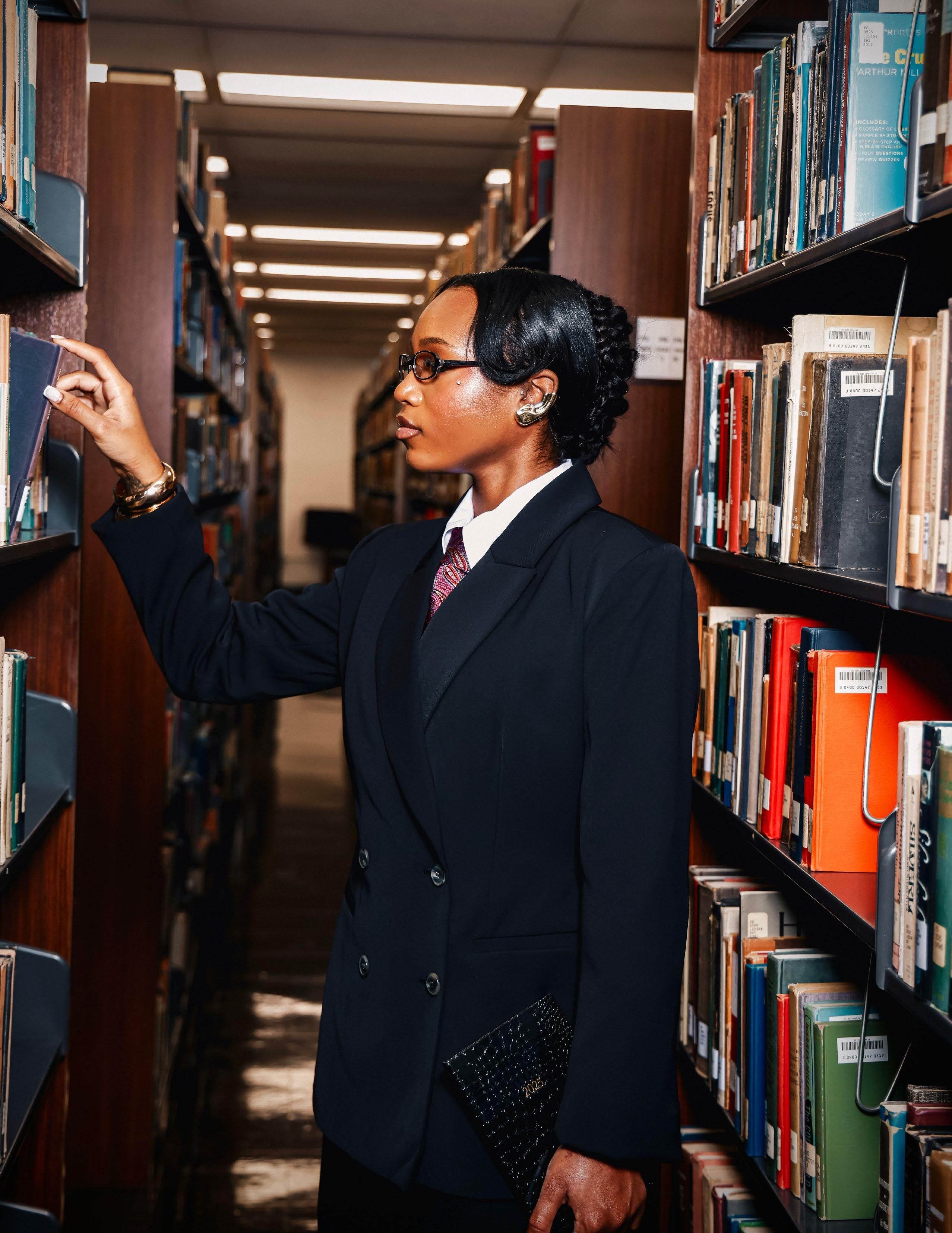
LETTER FROM THE EDITOR
Welcome to the first issue of Nubian,
We are thrilled to embark on this journey with you, dedicated to celebrating the vibrant lives and diverse experiences of women, especially women of color.
In a world where representation matters, we aim to create a space that not only reflects your stories but also inspires and empowers you. Our mission is to curate content that resonates deeply, offering insights into fashion, politics, finance, and lifestyle tailored specifically for our community. Each page is designed to be a source of inspiration, knowledge, and connection, inviting you to explore the multifaceted dimensions of being a woman today.
As you flip through our pages, you’ll discover a blend of bold fashion statements, thought-provoking articles on current issues, and practical resources that can help you navigate your personal and professional life. We are committed to amplifying the voices of those often underrepresented, showcasing not only the beauty of diversity but also the strength that comes from our shared experiences.
We believe that every woman has a unique story to tell, whether it’s navigating the complexities of career and finance, embracing cultural heritage through fashion, or engaging in the political landscape that affects us all. Our goal is to provide you with the tools and inspiration you need to thrive in every aspect of your life.
Thank you for joining us on this exciting journey. We can’t wait to explore, learn, and grow together. Your voice matters, and we are honored to be a part of your story.
With love and gratitude,
Jaylen Walker
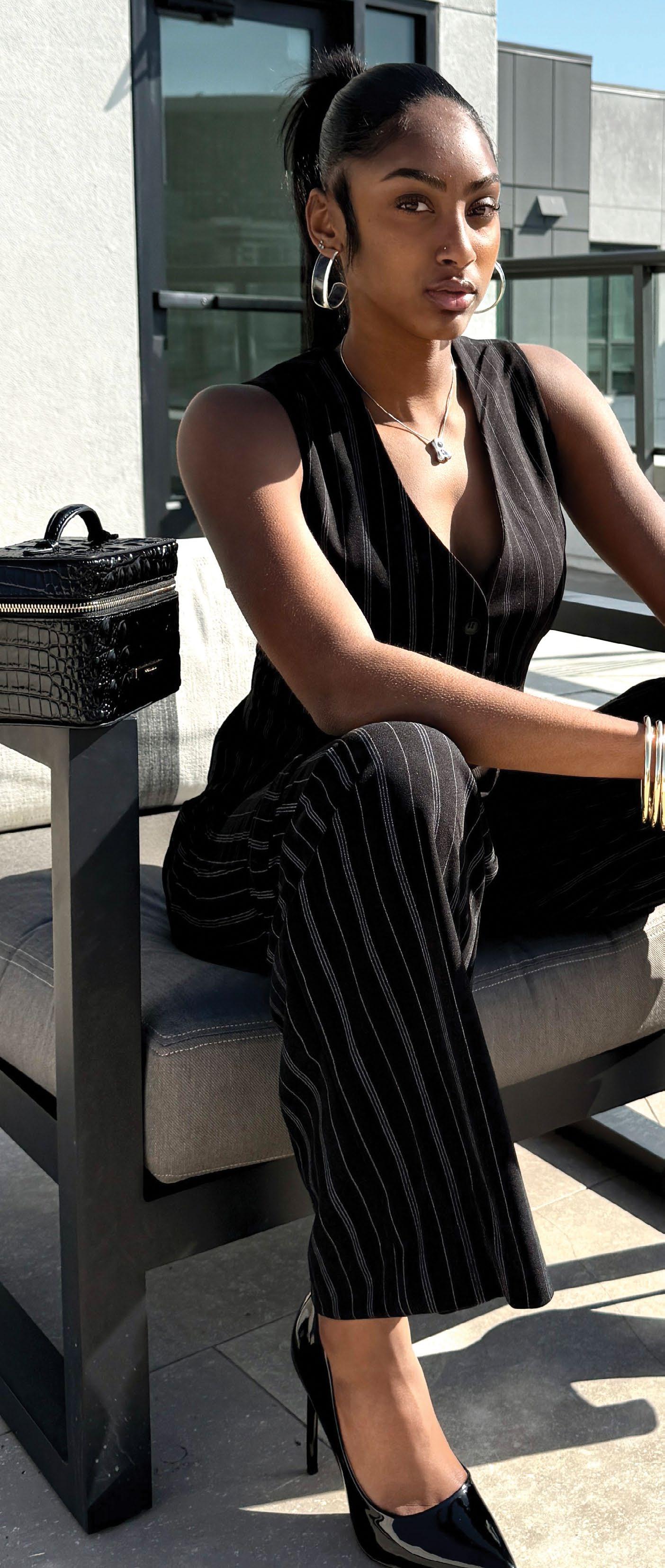
BOSS LIFE STYLE
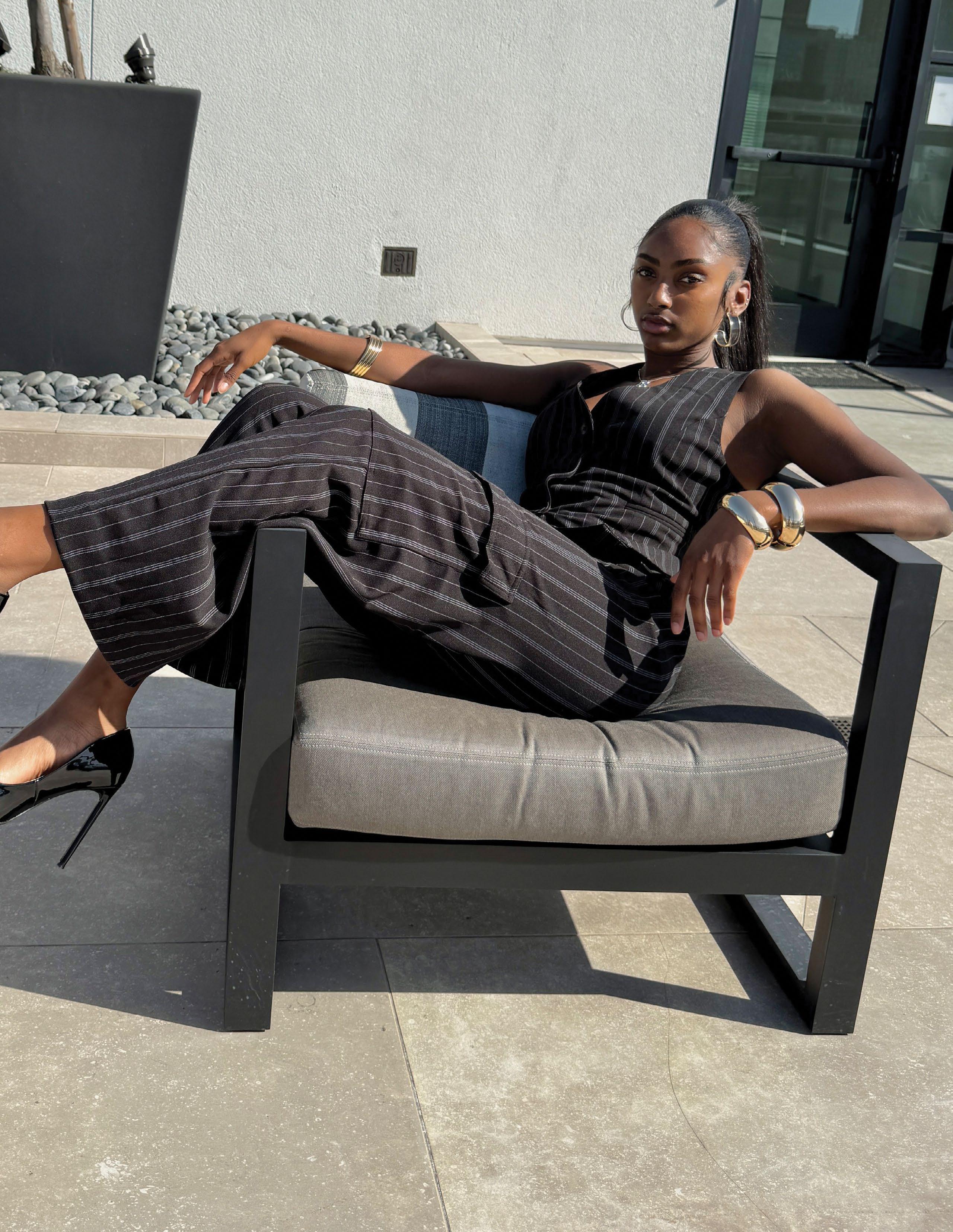
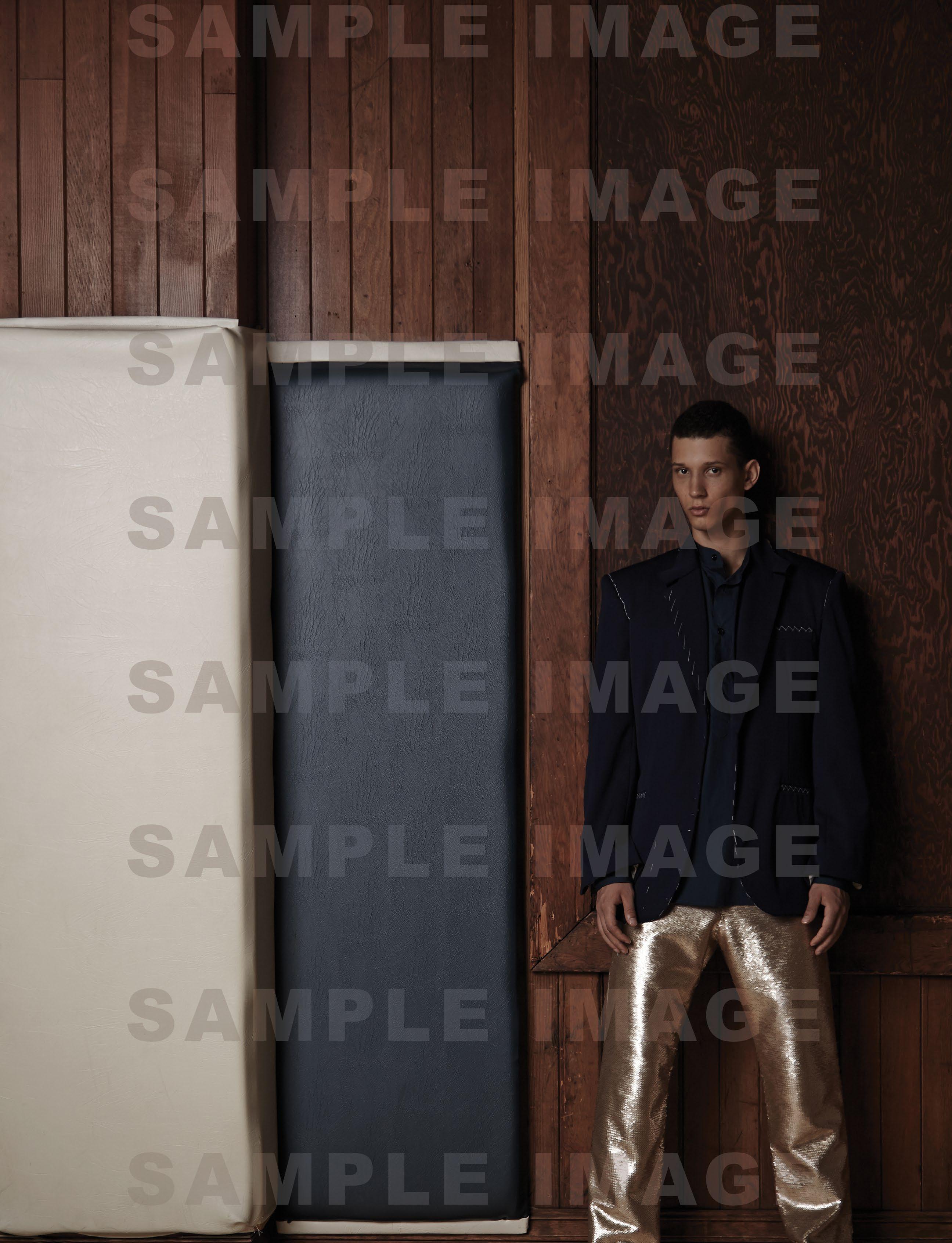
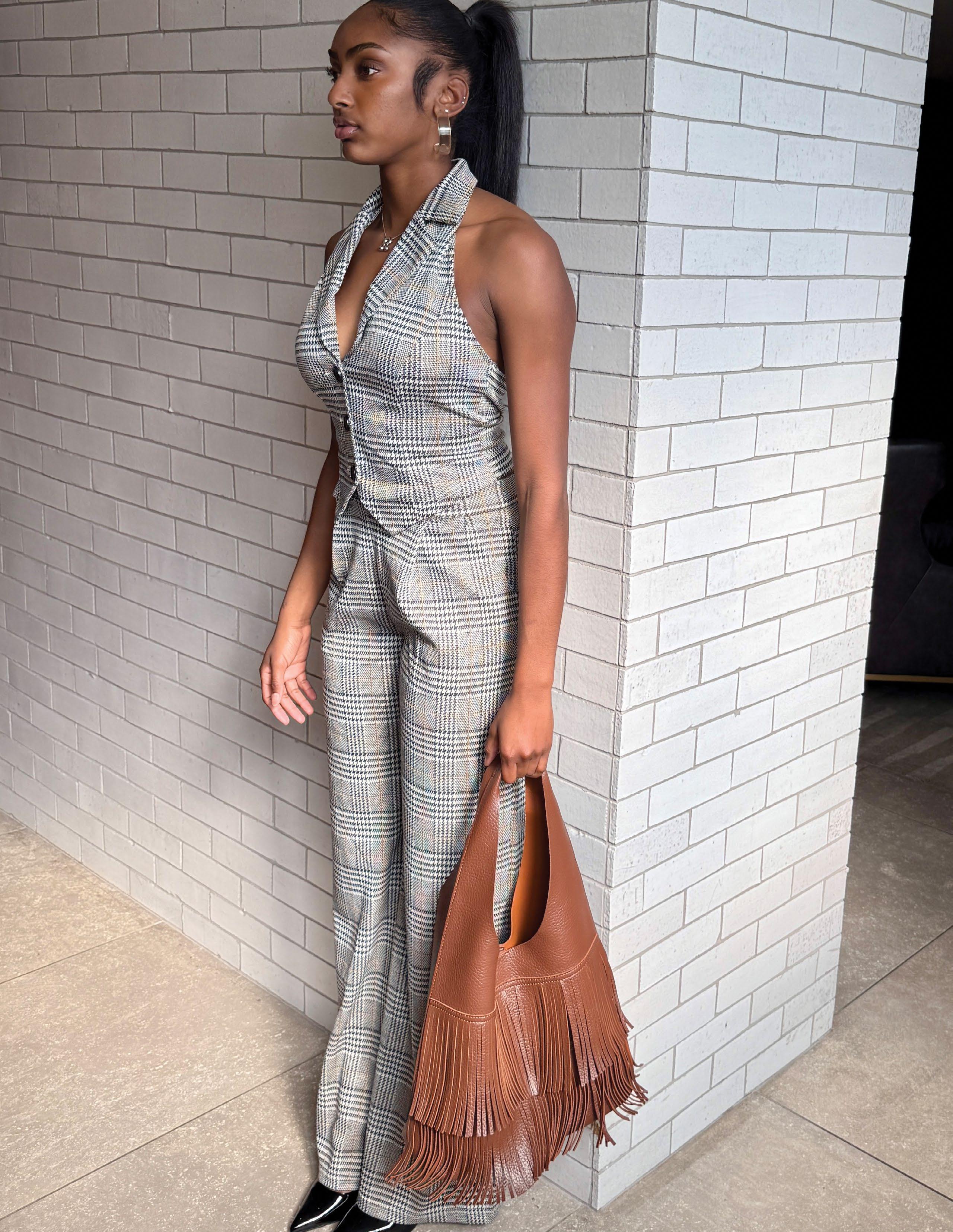
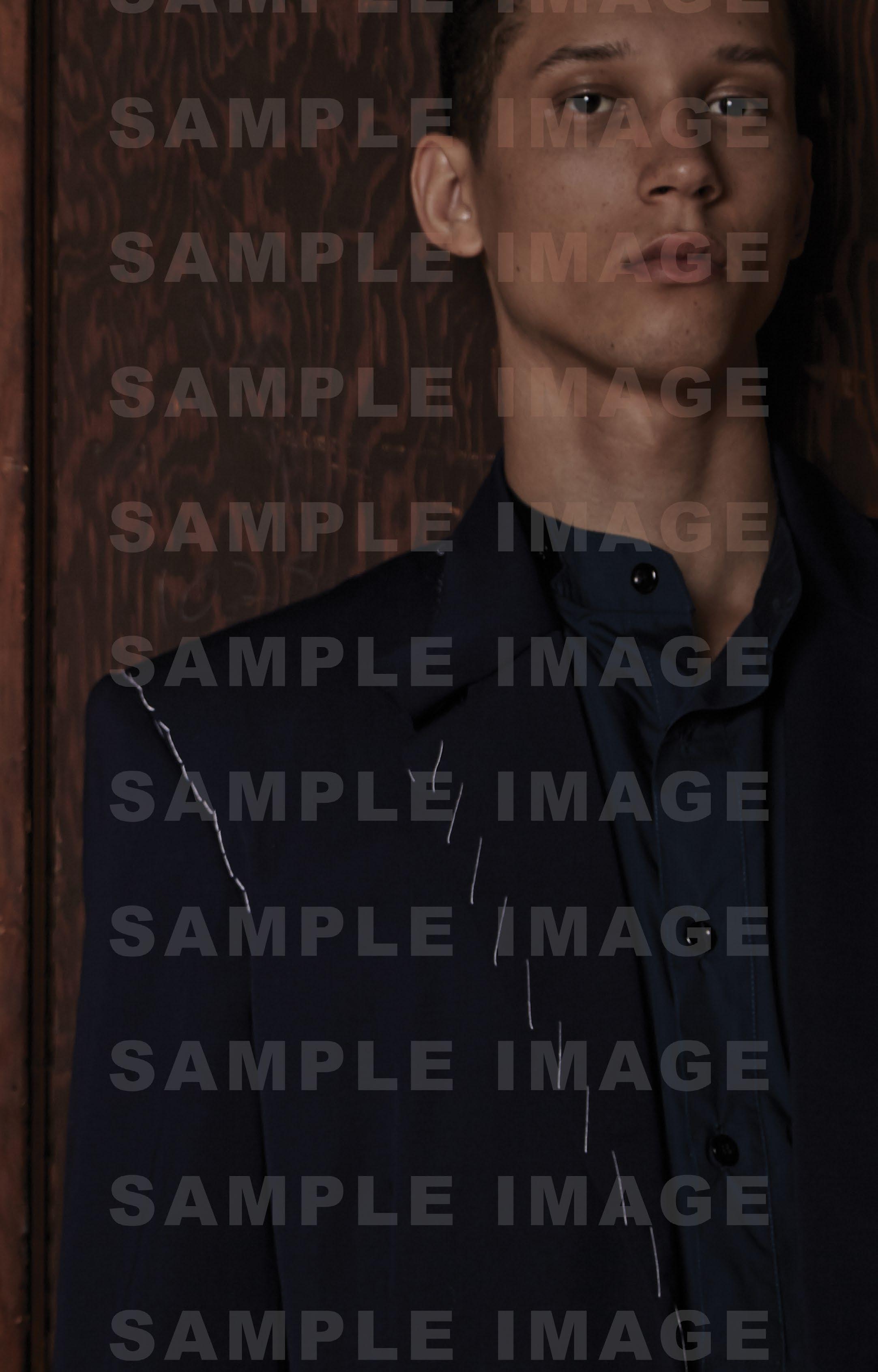
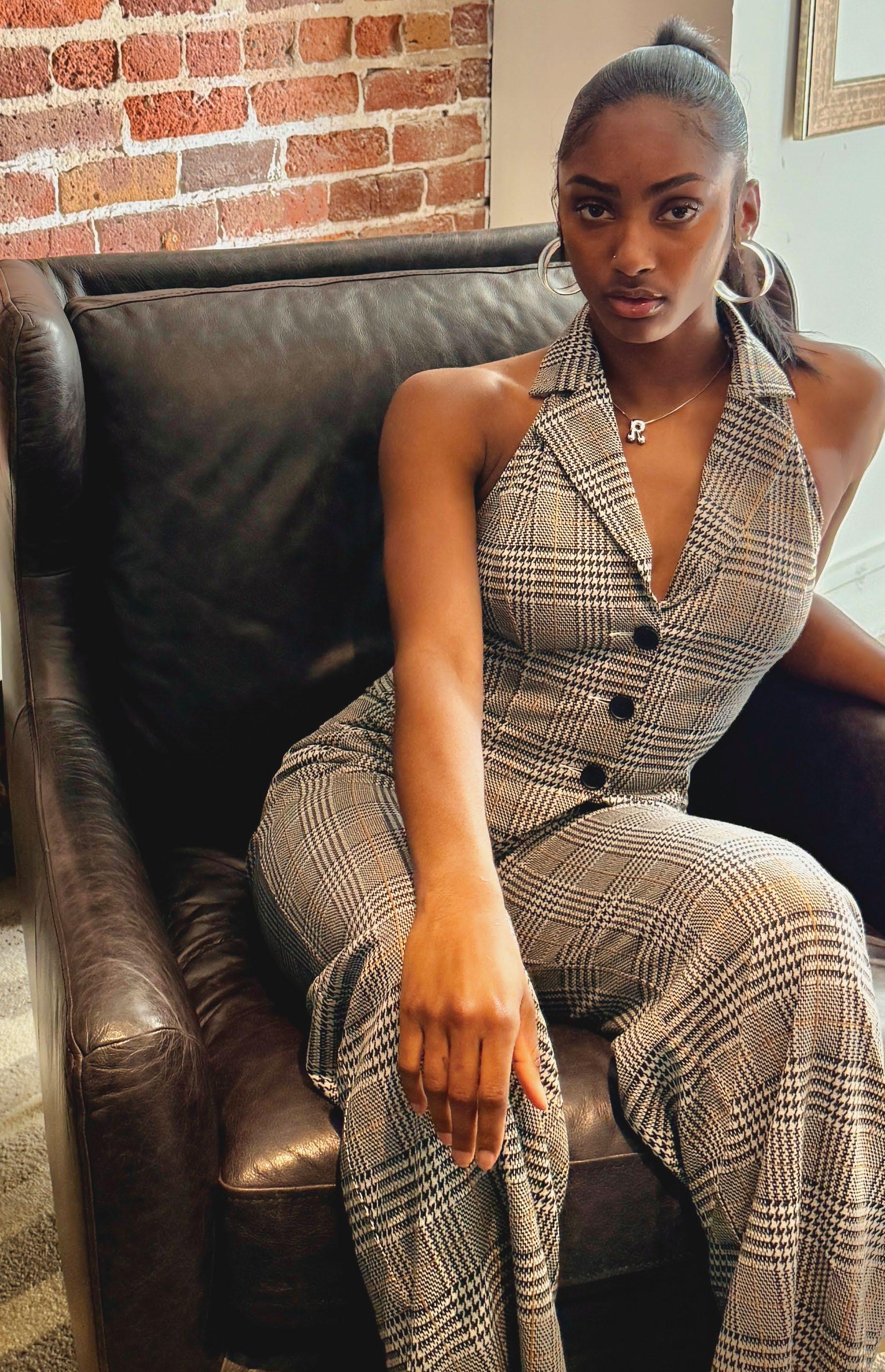

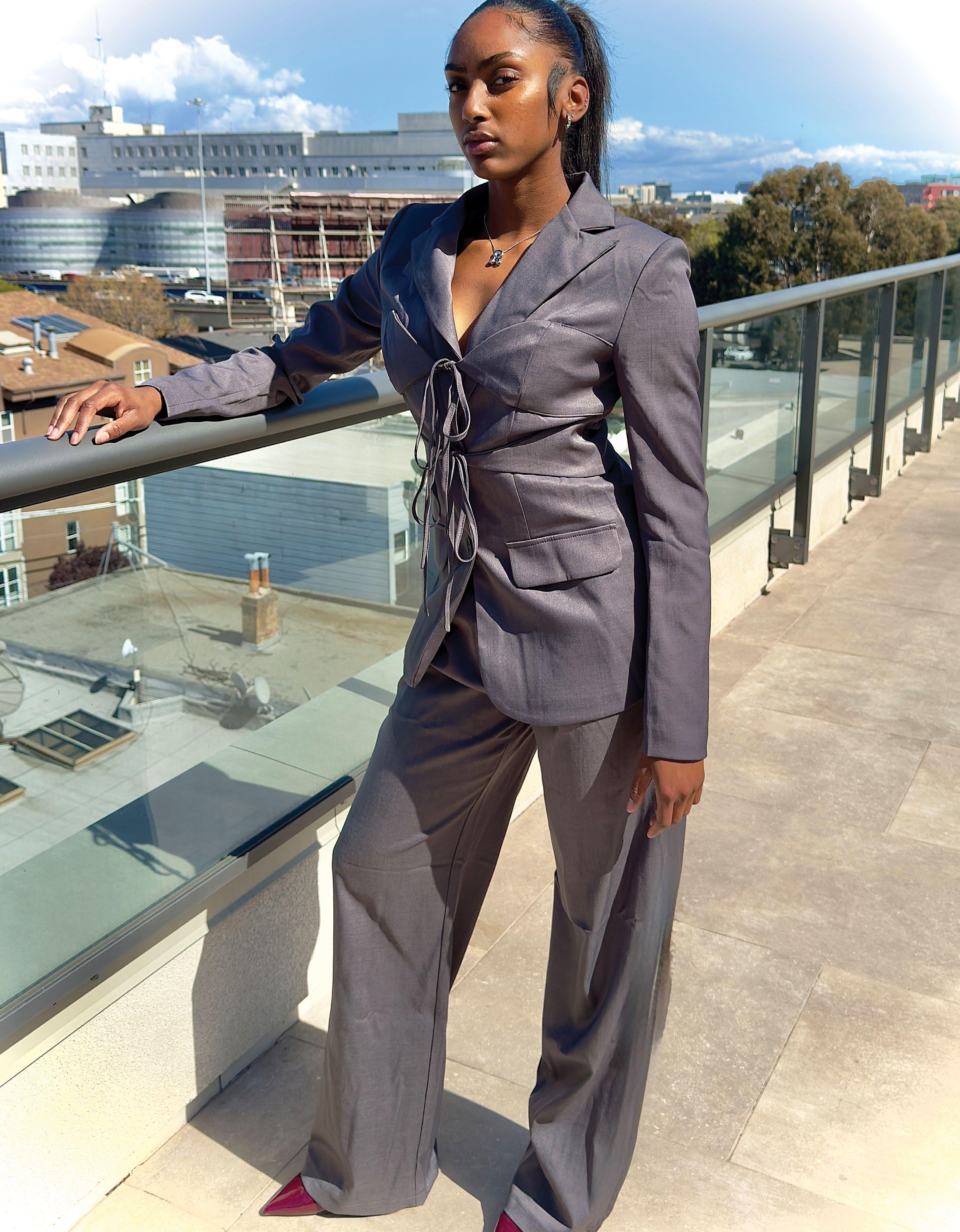
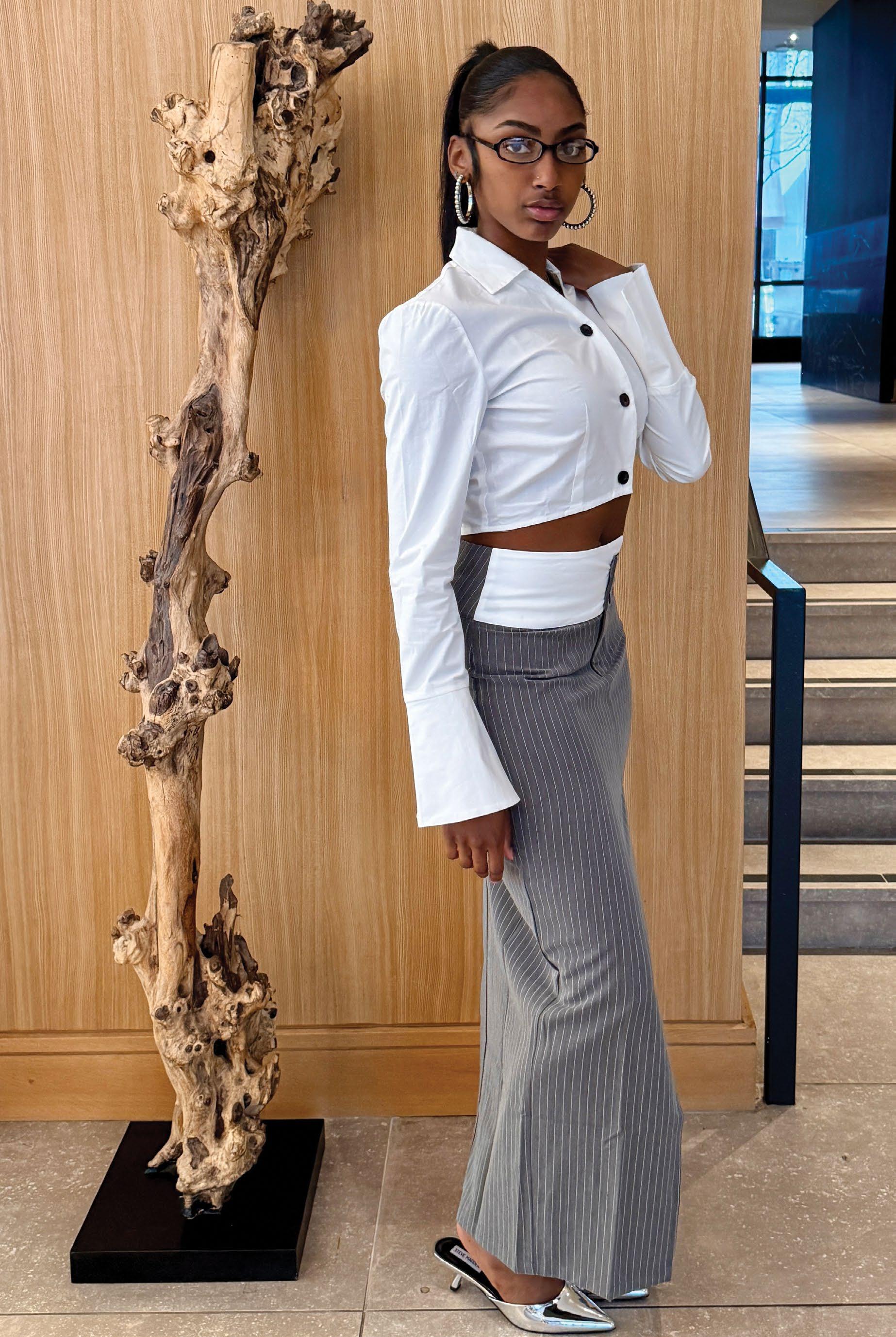
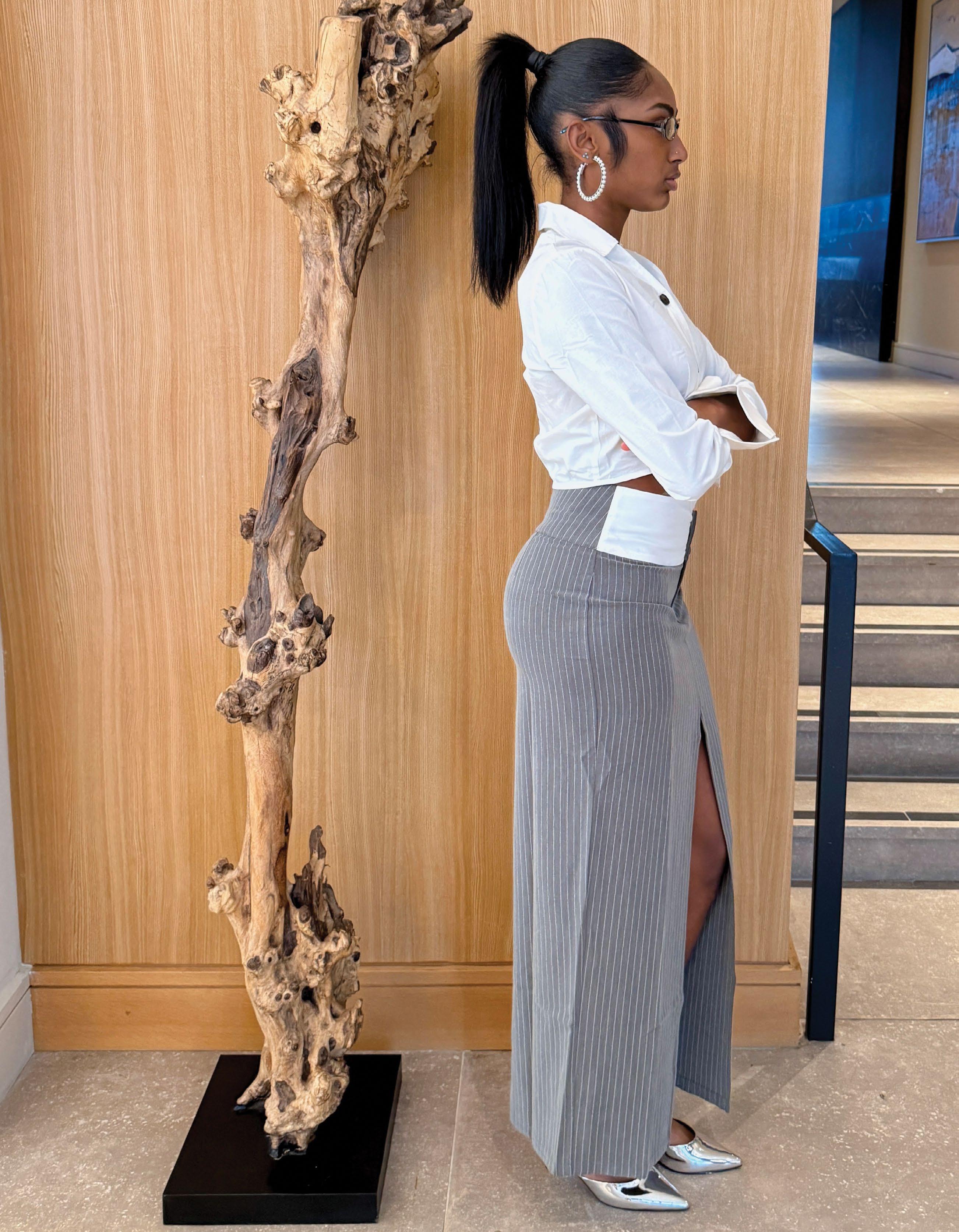
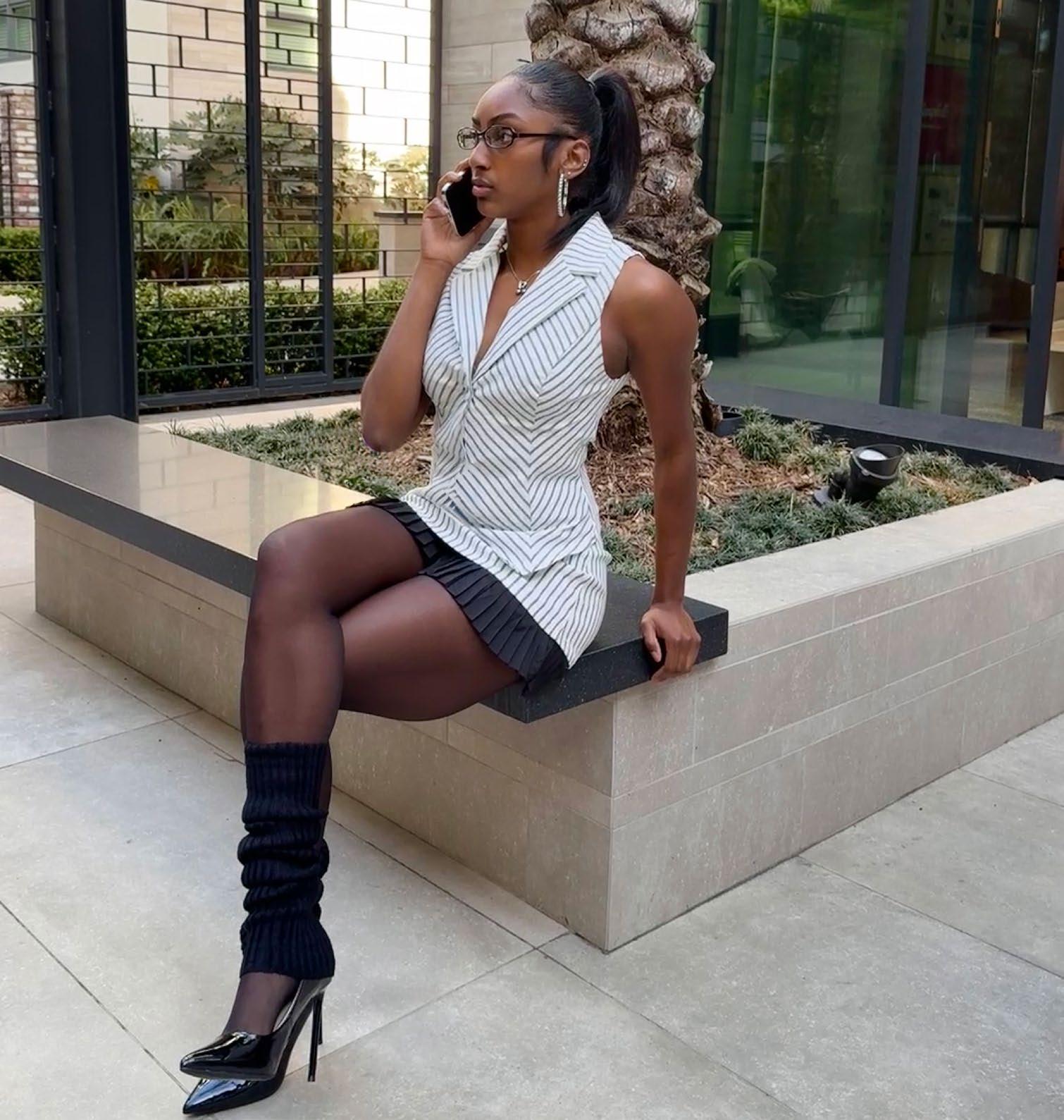
Breaking Barriers: The Unseen Struggles and Triumphs of Minority Women in the Workplace
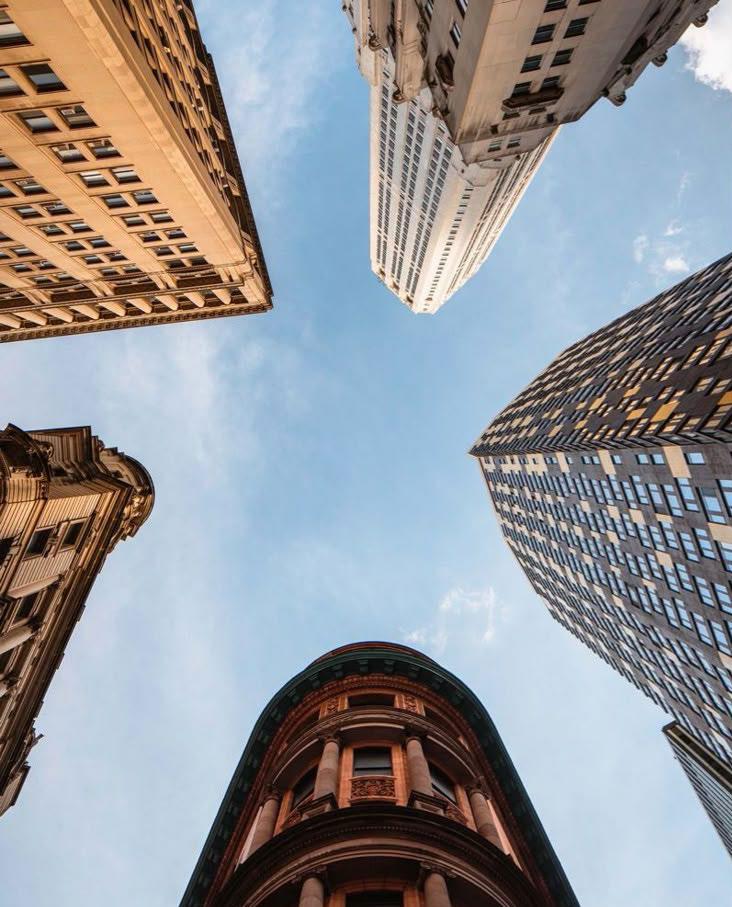
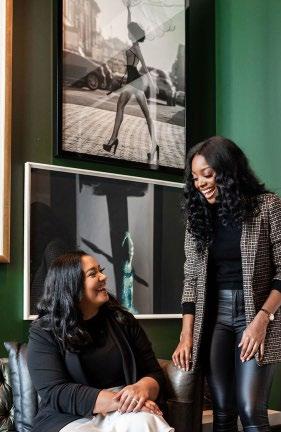
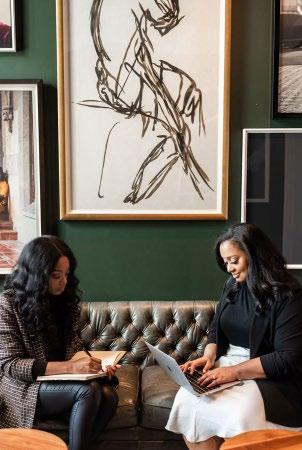
In corporate America, minority women are carving out spaces of empowerment and self-expression. The workplace, which is of course a male-dominated arena, has long been a battleground for women striving to balance professionalism with personal identity. For minority women, this balance is even more precarious, navigating the dual challenges of racial and gender biases. Fashion has emerged as a powerful tool, more like a silent language that speaks volumes about identity, authority, and resilience.
Representation of women of color in the workplace is essential for creating a truly inclusive, equitable, and dynamic work environment. It is a matter of social justice, economic empowerment, and organizational success. Historically, women of color have faced systemic barriers to entry and advancement in professional spaces, resulting in underrepresentation and limited opportunities. “The gap in earnings between women and men, although smaller than it was years ago, is still significant; women continue to be underrepresented in certain industries and occupations; and too many women struggle to combine aspirations for work and family”.Yellen, Ensuring their presence in the workplace, challenges these inequities and promotes fairness, allowing for a more diverse talent pool that reflects the broader society. From a business perspective, diversity drives innovation.
Women of color bring unique perspectives curated by their cultural, racial, and gender experiences. These perspectives bring life to the decision making processes, come up with creativity, and enable organizations to understand better and serve diverse customer bases. In our economy, inclusivity is a competitive advantage we see how it helps companies connect with a wider range of clients and communities. Representation also has a profound impact on workplace culture. “There are 74.6 million women in the civilian labor force. Almost 47 percent of U.S. workers are women. More than 39 percent of women work in occupations where women make up at least three-quarters of the workforce.”
When women of color are visible in leadership roles, it dismantles stereotypes and biases, creating a more inclusive environment where everyone feels valued and empowered. This helps boost employee morale, retention, and productivity. Additionally, seeing women of color in positions of influence inspires not only other women of color but also your peers, demonstrating that career advancement is attainable regardless of race or gender. On a societal level, representation addresses historical inequities and promotes economic empowerment for marginalized groups. It helps close wage gaps and provides opportunities for women of color to thrive professionally, contributing to broader economic growth and stability. Ultimately, the inclusion of women of color in the workplace is not just a moral imperative but a strategic necessity, promoting social progress as well as driving organizational success in an increasingly diverse world.
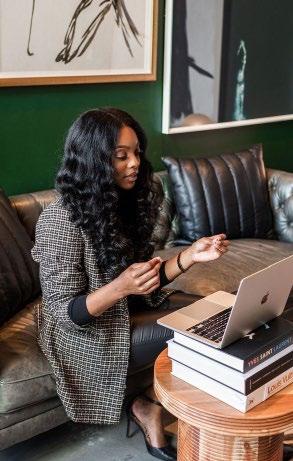
For many minority women, the workplace is not just a space to excel professionally but also a stage where cultural identity and personal expression intersect. The traditional “power suit,” often a symbol of corporate lifestyle, has been reimagined by women of color to reflect their unique heritage and individuality. Many women in the workplace incorporate traditional textiles like silk and wool into their work attire, pairing them with modern cuts that highlight both professionalism and cultural pride. From African prints to Latin American embroidery, these women are infusing their wardrobes with elements that reflect their heritage. Making sure to challenge the notion that professionalism must conform to a certain standard. The act of dressing for work is often seen as a boring routine, but for minority women, it can be a form of resistance. In a world where their competence is frequently questioned, fashion becomes a means of reclaiming agency.
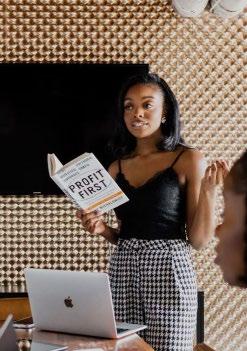
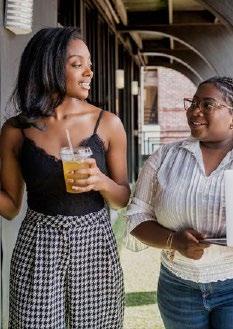
While fashion can be a powerful tool for self-expression, it also comes with its challenges. Minority women often find themselves walking a fine line between standing out and fitting in. Too much individuality can lead to being labeled as “unprofessional,” while too much conformity can result in the erasure of identity. For Black women, in particular, the stakes are high. Natural hairstyles, such as afros, braids, and locs, have historically been stigmatized in professional settings. The CROWN Act, which stands for “Create a Respectful and Open World for Natural Hair,” has been enacted in several states to combat this discrimination. The CROWN Act was co-founded by Dove, “The CROWN Coalition to advance anti-hair discrimination legislation called The CROWN Act. The CROWN Act, which stands for Creating a Respectful and Open World for Natural Hair, is a law that prohibits racial discrimination based on natural textures and protective hairstyles, including braids, locs, twists, and bantu knots.”Dove Yet many Black women still face bias based on their hair choices.
As minority women continue to push for greater representation in the workplace, the fashion industry is beginning to take notice. A growing number of brands are recognizing the need for inclusivity, both in their designs and their marketing. Brands are not just catering to a niche market, but they are reshaping the fashion landscape to reflect the diversity of the modern workforce. The impact of these brands extends beyond the runway. By showcasing models of different ethnicities, body types, and ages, they are challenging the narrow standards of beauty that have long dominated the industry. This shift is particularly significant for minority women, who have historically been underrepresented in fashion media. The relationship between fashion and workplace dynamics is complex, but it is also a great place for potential growth. For minority women, fashion is more than just a means of self-expression, it is a catalyst for change. By embracing their cultural heritage
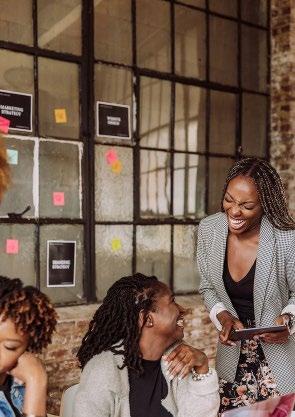
and challenging traditional norms, these women are redefining what it means to be professional in the 21st century.
The journey is far from over, but the progress is undeniable. From boardrooms to courtrooms, minority women are using fashion to navigate the complexities of the workplace and while doing so, are paving the way for a more inclusive and equitable future. As we look to the future, it is clear that fashion will continue to play a pivotal role in the workplace. For minority women, it is a tool for empowerment, a means of resistance, and a celebration of identity. The rise of inclusive fashion brands and the growing acceptance of diverse forms of self-expression are promising signs that the workplace is evolving.

Even though there is still much work to be done, companies must continue to challenge their own biases and create environments where all employees feel valued and respected. This includes embracing different forms of self-expression, from clothing to hairstyles, and recognizing that diversity is not just a buzzword. For minority women, the message is clear. Your identity is your strength. Whether through a bold print, a traditional textile, or a natural hairstyle, your fashion choices are a testament to your resilience and your power. In a world that often seeks to diminish your voice, fashion is a way to say, “I am here, and I belong.” In the end, the true power of fashion lies not in the clothes themselves but in the stories they tell and the barriers they break. For minority women in the workplace, those stories are just beginning to be heard.
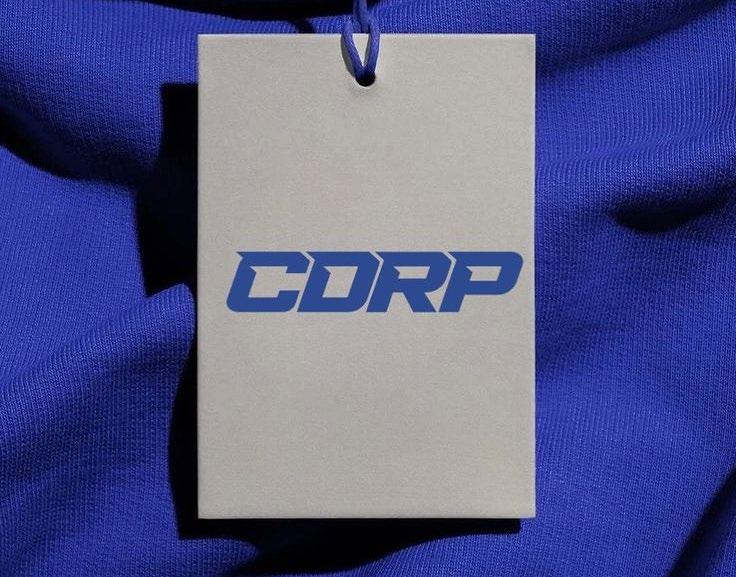
Stitching Stories: An Inside Look at the Visionary World of Drina Johnson
In the heart of Los Angeles, 26-year-old Drina is making waves in the fashion world. With an innate talent for design and an eye for style, she is a force to be reckoned with, drawing from her experiences and her unwavering belief that she is destined to create.
Her childhood was filled with colorful sketches and fabric swatches. She was inspired by the vibrant culture of Los Angeles and the eclectic mix of styles surrounding her. Drina began to experiment with clothing, often repurposing thrifted finds into unique pieces that reflected her personality. Drina’s passion for fashion deepened as she matured. Her designs are a blend of bold colors, intricate patterns, and unexpected silhouettes, influenced by her diverse upbringing and the many cultures she has encountered.
As a young designer in a competitive industry, Drina has faced her fair share of challenges, from self-doubt to navigating the complexities of fashion shows and networking. Yet, she remains undeterred. Drina is not just a designer, she is also a stylist. Working with various clients to help them discover their personal style. Her approach is deeply personal, as she believes that fashion should empower individuals rather than dictate trends. Looking ahead, Drina is determined to expand her brand and continue pushing the boundaries of fashion. Drina’s journey is just beginning, but her impact is already being felt. In a city that thrives on ambition and innovation, Drina stands as a beacon of hope for aspiring artists everywhere. With her passion, creativity, and unwavering spirit, she is not just designing clothes but shaping the future of fashion, one stitch at a time.
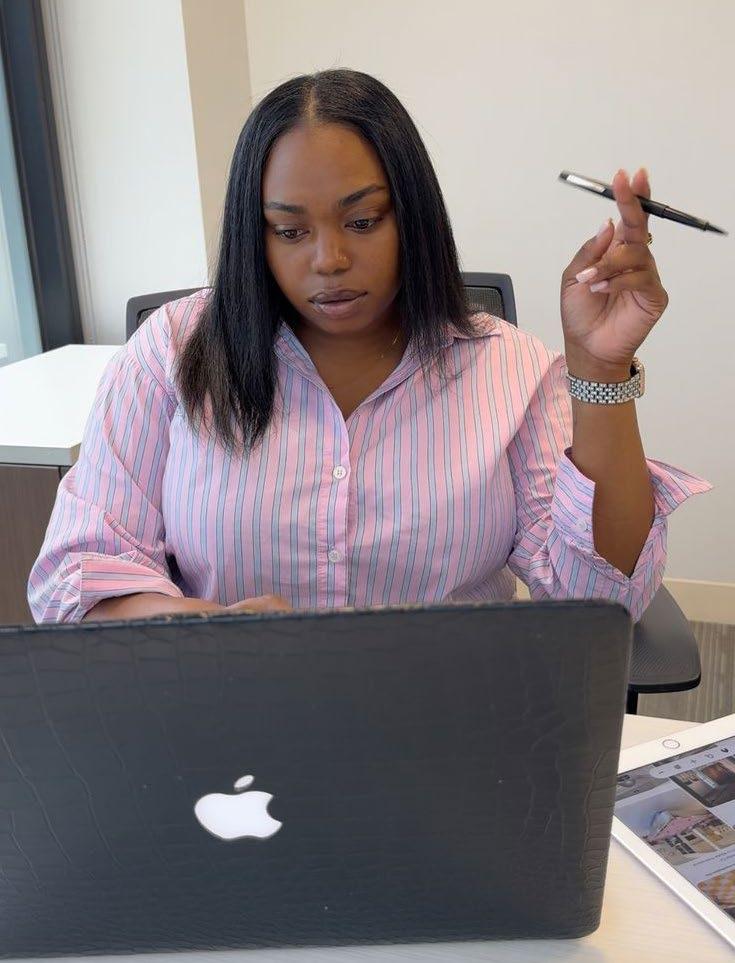
J: Thank you so much for your time Drina, I am so glad to finally get some insight let’s get right into it!
D: Thank you for having me, sounds like a plan let’s get into it!
J: What inspired you to become a fashion stylist, and how did you get started in the industry?
D: Growing up, I’d raid my mom’s closet and style my friends for fun in high school. Years later, I started designing clothes then I gained more confidence. I recently shifted to also styling as well as designing. I make sure to network as much as possible and stay up to date with the latest fashion.
J: And how do you stay updated on the latest fashion trends and incorporate them into your work?
D: I’m constantly scrolling through platforms like TikTok, Instagram, and Pinterest, but I also love attending fashion weeks.
J: What’s the most challenging part of being a fashion stylist, and how do you overcome it?
D: The unpredictability. Sometimes pieces don’t arrive on time, or a client changes their mind last minute. I’ve learned to always have a backup plan and stay calm under pressure.
J: How do you approach styling for different body types, personalities, or cultural backgrounds?
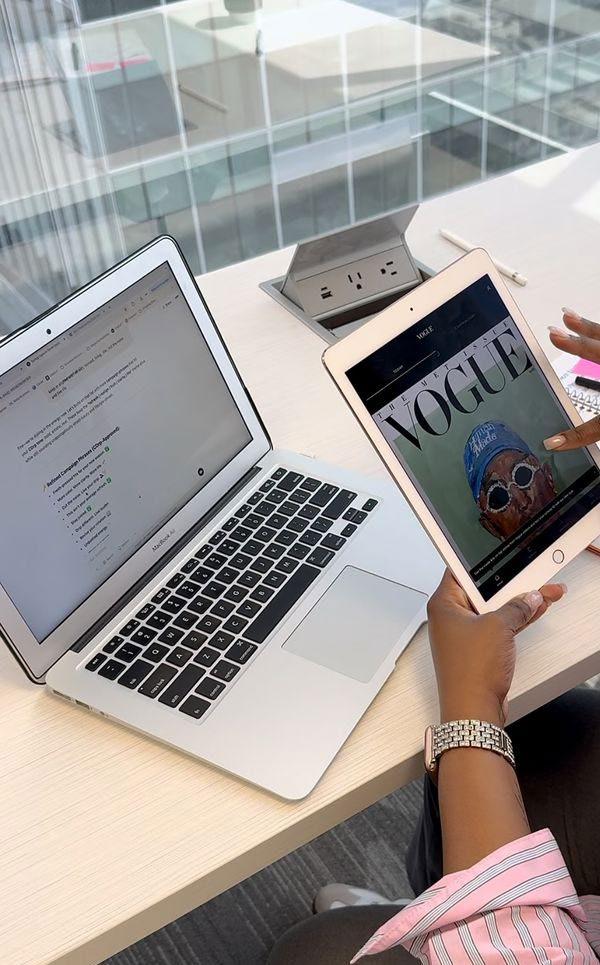
D: It’s all about listening and observing. I ask questions to understand their comfort level and what they want to highlight. Fashion should embrace individuality, so I focus on what makes each person unique.
J: What’s your advice for building a strong network in the fashion industry?
D: Be genuine and helpful. Attend events, DM people you admire, and don’t be afraid to start small. I’ve met some of my closest collaborators through Instagram or at industry events.
J: How do you handle creative differences with clients, photographers, or designers?
D: I try to understand their perspective and find a middle ground. Communication is key. At the end of the day, it’s about collaboration, not ego.
J: What role do you think sustainability plays in fashion styling today?
D: Huge! I’m really mindful of the pieces I pull, whether it’s renting, thrifting, or working with sustainable brands.
J: What are your go-to resources for finding unique or vintage pieces?
D: I’m obsessed with thrifts and online platforms like Depop, 2nd Street, and Goodwill.
J: What’s your opinion on fast fashion versus high-end fashion in styling?
D: Fast fashion has its place, it’s accessible and can be great for trendy pieces, but I try to avoid it as much as possible. High-end fashion offers quality and craftsmanship, but I also love mixing in vintage and independent designers.
D: The unpredictability. Sometimes pieces don’t arrive on time, or a client changes their mind last minute. I’ve learned to always have a backup plan and stay calm under pressure.
J: What’s your advice for someone just starting out in the fashion industry?
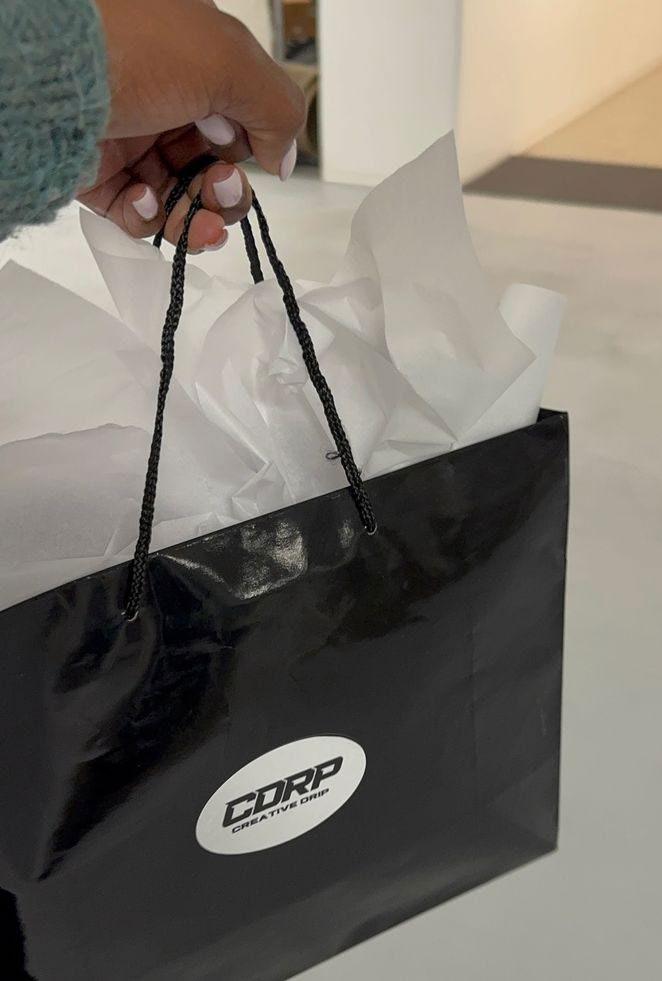
D: Be patient and persistent. Start by assisting someone you admire, it’s the best way to learn the ropes. Don’t be afraid to put yourself out there and create your own opportunities.
J: That is a wrap, I want to thank you again and wish you the best of luck in your future endeavors.
D: Of course, thank you again! Looking forward to more interviews in the future.
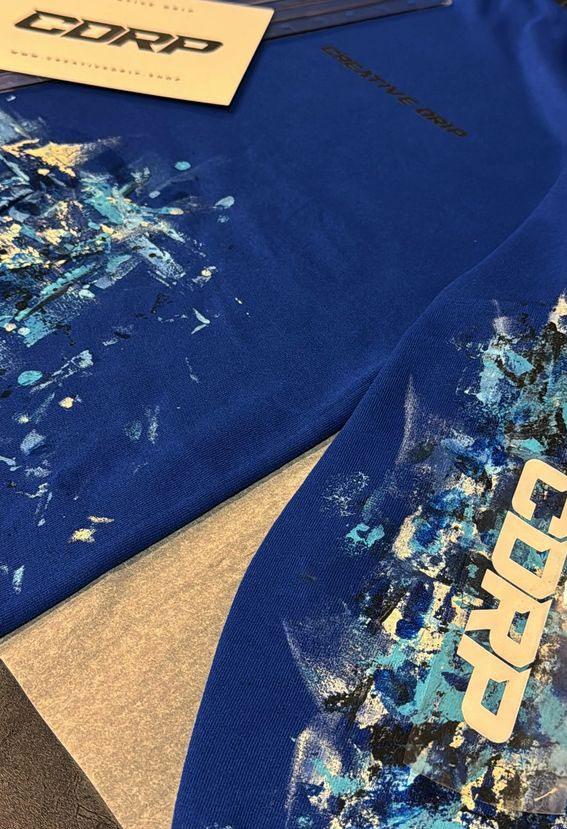
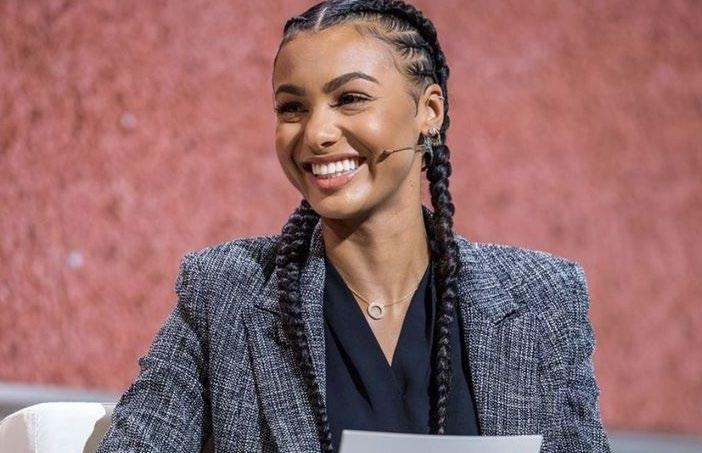
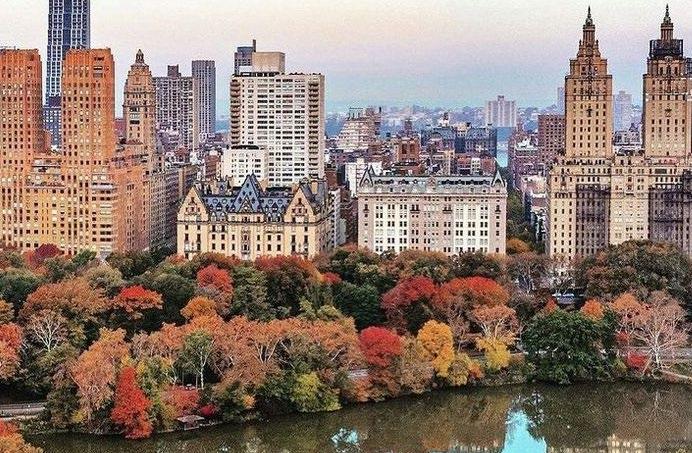
UnPacking ineqUality
While the glamour and allure of fashion often dominate public perception, the underlying issues of workplace inequality demand our attention. In an industry that prides itself on creativity and diversity, the reality is that significant disparities exist, impacting the careers of countless individuals. It is important that we advocate for change, not only for ourselves but for future generations of fashion professionals.
One of the most glaring forms of workplace inequality in fashion is gender disparity. Despite women making up a substantial portion of the workforce, particularly in entry-level positions, they remain underrepresented in leadership roles. According to a recent report by the Council of Fashion Designers of America (CFDA), only 14% of creative directors in the industry are women. This discrepancy is not merely a statistic; it reflects a systemic bias that undermines the contributions of talented female designers and leaders. As we strive for a more inclusive industry in the near future , we must challenge the outdated notion that leadership is a masculine position.
Racial and ethnic disparities also negatively affect inequality in the fashion workplace. The industry has long been criticized for its lack of representation and inclusivity, particularly for designers and models of color.
A recent study by the fashion consultancy firm, The Business of Fashion, found that only 27% of models on runways during major fashion weeks were people of color.
This lack of representation extends beyond models, as designers and executives from diverse backgrounds often face greater hurdles in accessing opportunities and resources. The fashion industry must confront its own biases and actively work to uplift underrepresented voices.
Many aspiring fashion professionals come from privileged backgrounds, allowing them access to internships and networks that can fast-track their careers. While those from less fortunate backgrounds often struggle to break into the industry, facing barriers such as unpaid internships and limited connections. The fashion world must recognize that talent exists in all walks of life and take proactive steps to create equitable pathways for aspiring designers, marketers, and business leaders, regardless of their financial situation. The impact of these inequalities extends beyond individual careers, it affects the industry’s creativity and innovation. A diverse workforce brings a vast amount of perspectives and ideas, fostering creativity that is essential for a dynamic industry like fashion. When voices from different backgrounds are heard and valued, the result is a richer, more positive fashion landscape that resonates with a diverse global audience.
Fashion companies should invest in mentorship programs that empower aspiring professionals from underrepresented groups. Businesses need to establish clear diversity and inclusion goals, holding themselves accountable for progress. The industry should also prioritize fair compensation for all employees, eliminating the exploitative practice of unpaid internships that disproportionately affect those from lower socioeconomic backgrounds. It is time for us to challenge the status quo and demand greater representation for women, people of color, and individuals from diverse socioeconomic backgrounds. By addressing workplace inequality head on, we can create a fashion world that not only celebrates creativity but also embodies the principles of fairness and inclusivity. The future of fashion depends on it.
Through Her Eyes: The Bold Narratives of Amy Sherald’s Artistry
In the world of contemporary art, Amy Sherald surely stands as a beacon of innovation and representation. Known for her interesting, large scale portraits that reimagine Black identity through a lens of grace, dignity, and quiet power, Sherald has carved out a unique space in the art world. Her work is characterized by grayscale skin tones set against vibrant, surreal backdrops and challenges traditional notions of race, identity, and beauty. But Sherald’s impact extends far beyond the canvas. Through her art, she has sparked conversations about representation, inspired communities, and redefined what it means to see oneself as a person of color reflected in art.
Amy Sherald was born in 1973 in Columbus, Georgia. She grew up in a family that valued creativity and education. Her father, also a painter, introduced her to art at a young age, but her journey to becoming a professional artist was far from linear. Sherald faced significant personal challenges, including a diagnosis of congestive heart failure at the age of 30, which forced her to confront her mortality and reevaluate her life’s purpose. This period of introspection ultimately deepened her commitment to her craft, driving her to earn her MFA from the Maryland Institute College of Art in 2004.
Sherald’s resilience in the face of adversity is portrayed in her art. Her portraits are not just depictions of individuals; they are narratives of survival, strength, and selfdetermination. By choosing to paint her subjects in grayscale, she removes the burden of racial stereotypes, allowing viewers to see her subjects as universal figures of humanity. The vibrant backgrounds and clothing in her paintings emphasize the individuality and inner lives of her subjects.
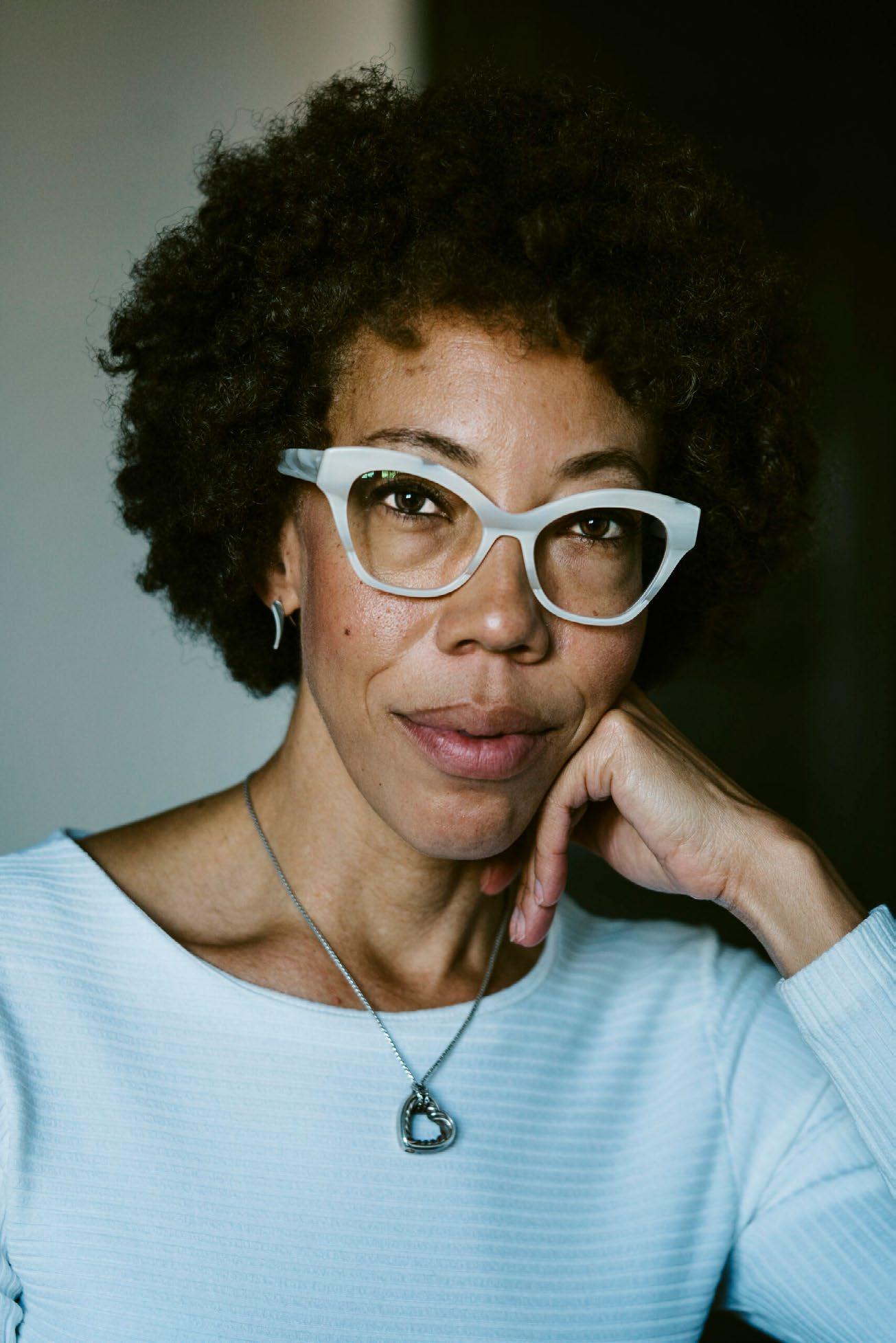
Sherald’s rise was catapulted in 2016 when she became the first woman and the first African American to win the prestigious Outwin Boochever Portrait Competition. Her winning piece, “Miss Everything (Unsuppressed Deliverance)”, depicted a young Black woman in a white
holding a teacup with a mischievous look. The painting challenged traditional norms of
and respectability. Highlighting a fresh perspective on Black womanhood.
However, it was her 2018 portrait of former First Lady Michelle Obama that truly brought Sherald into the global spotlight. The painting depicted Obama in a flowing gown, seated against a pale blue background. The portrait was celebrated for its elegance and modernity, but it was also groundbreaking in its representation. The painting became an instant cultural icon, symbolizing the power of representation and the importance of seeing oneself reflected in art.
Sherald’s work is deeply rooted in the concept of representation. Growing up, she noticed the absence of Black figures in the art she encountered, both in museums and in popular culture. This lack of representation left a lasting impression on her, shaping her artistic mission to create images that celebrate Black life and identity. Sherald’s work offers a positive narrative, one that celebrates the beauty, complexity, and lives of Black people. Sherald’s impact extends far beyond the art world. Her work has become a source of inspiration and empowerment for communities of color, particularly Black women and girls. By depicting her subjects with dignity and grace, Sherald has created art that affirms the worth and beauty of Black individuals. Her portraits serve as a reminder that Black lives matter, not just in the context of social justice movements but in the everyday moments of joy, reflection, and resilience. Sherald has used her platform to advocate for greater diversity and inclusion in the art world. She has spoken openly about the challenges she faced as a Black woman artist, from navigating predominantly white spaces to confronting negativity within the industry. Through her success, she has paved the way for other artists and women of color, showing that it is possible to break barriers and achieve recognition on one’s own terms. Amy Sherald’s art is a testament to the power of resilience and hope. Her portraits are not just images but stories of survival, strength, and selfdetermination. Through her work, Sherald has redefined what it means to see and be seen, offering a vision of Black identity that is both universal and deeply personal. As we look to the future, Sherald’s legacy is one of empowerment and transformation. Her art reminds us of the importance of representation, not just in the art world but in all aspects of society. It challenges us to see the humanity in others and to celebrate the beauty and complexity of our shared experiences. In a world that often seeks to divide us, Sherald’s work is a powerful reminder of our common humanity. Through her art, she has done just that, creating a space where Black individuals can see themselves reflected in a positive light. She has not only transformed the art world but also inspired a generation to dream, to hope, and to believe in the power of their own stories.

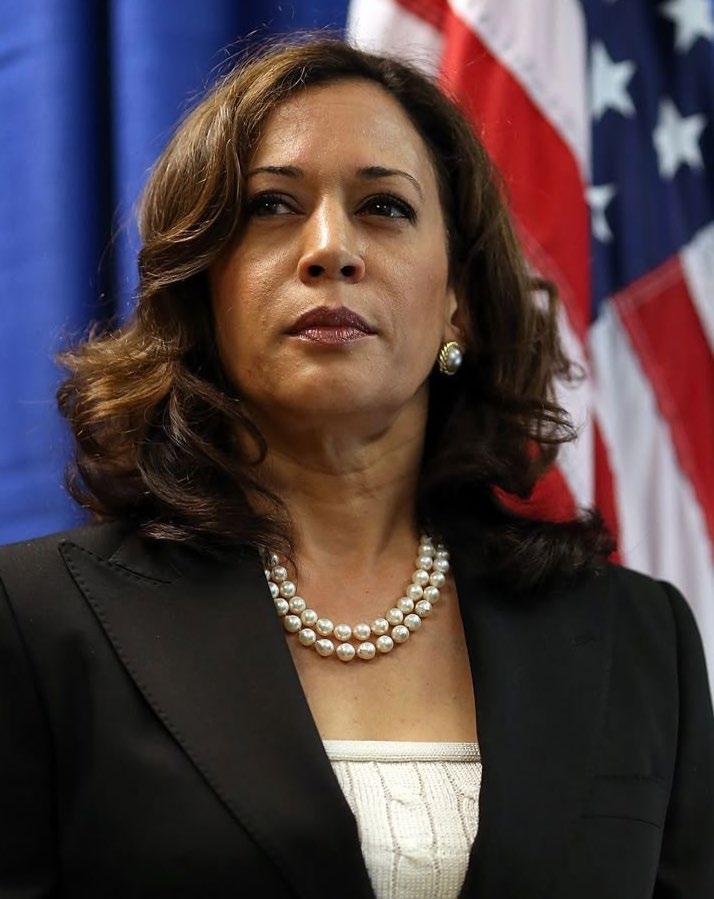
BOSS
Minority women are making significant strides across various fields, from politics to the workplace to fashion. These trailblazers are not only breaking barriers but also redefining norms and inspiring future generations. Here’s a list of ten remarkable minority women who exemplify excellence in these three interconnected realms.
1. Kamala Harris
As the first Black and South Asian woman to serve as Vice President of the United States, Kamala Harris embodies the intersection of race and gender in politics. Her powerful presence and advocacy for social justice have made her a role model for many. Harris often combines professional attire with stylish details, showcasing that leadership and fashion can coexist harmoniously.
2. Michelle Wu
The first woman and the first person of color to serve as Mayor of Boston, Michelle Wu is a rising star in American politics. Her focus on affordable housing and climate justice reflects the needs of diverse communities. Wu’s fashion choices, often characterized by tailored blazers and vibrant accessories, emphasize professionalism while also embracing her cultural background.
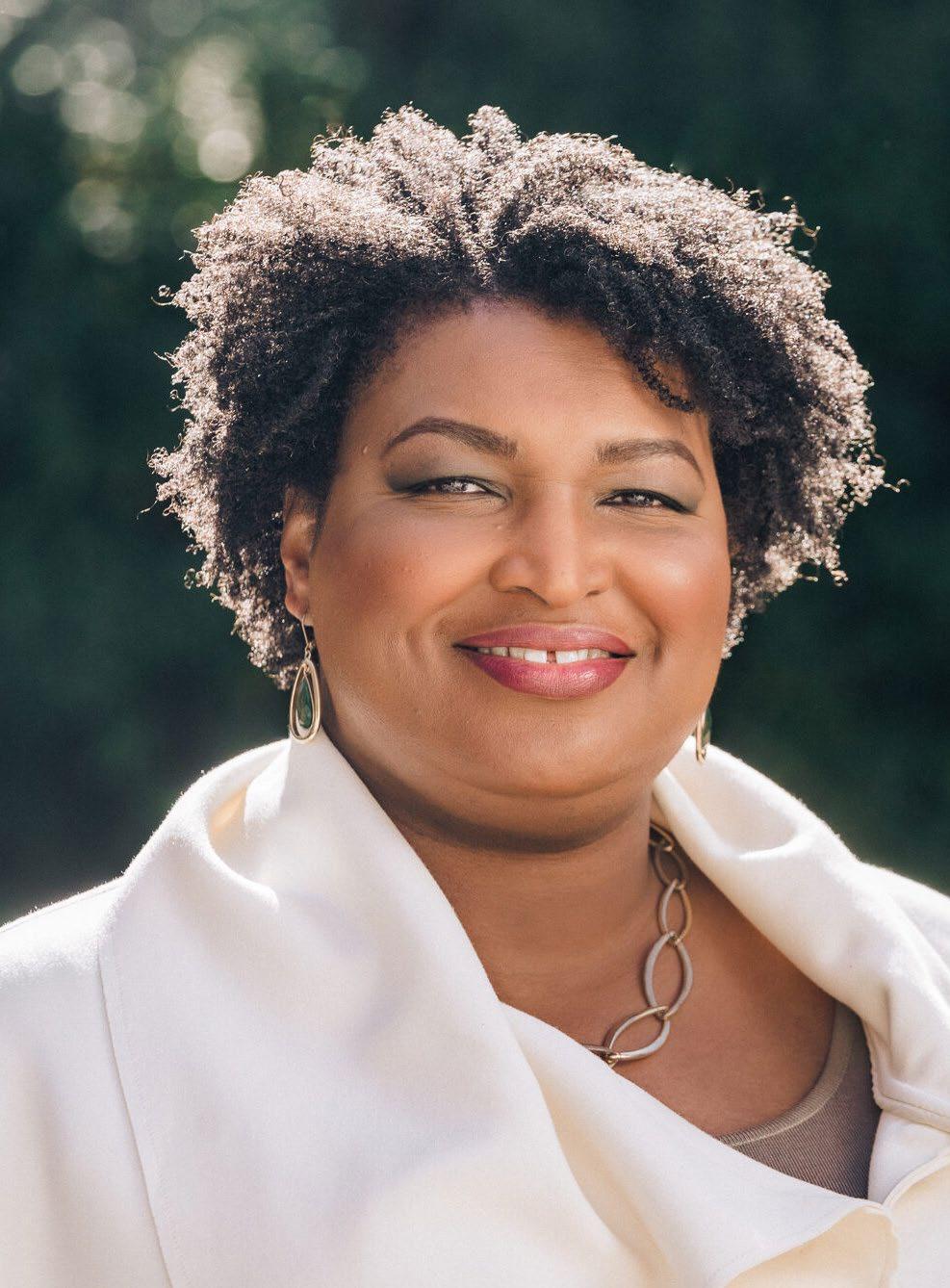
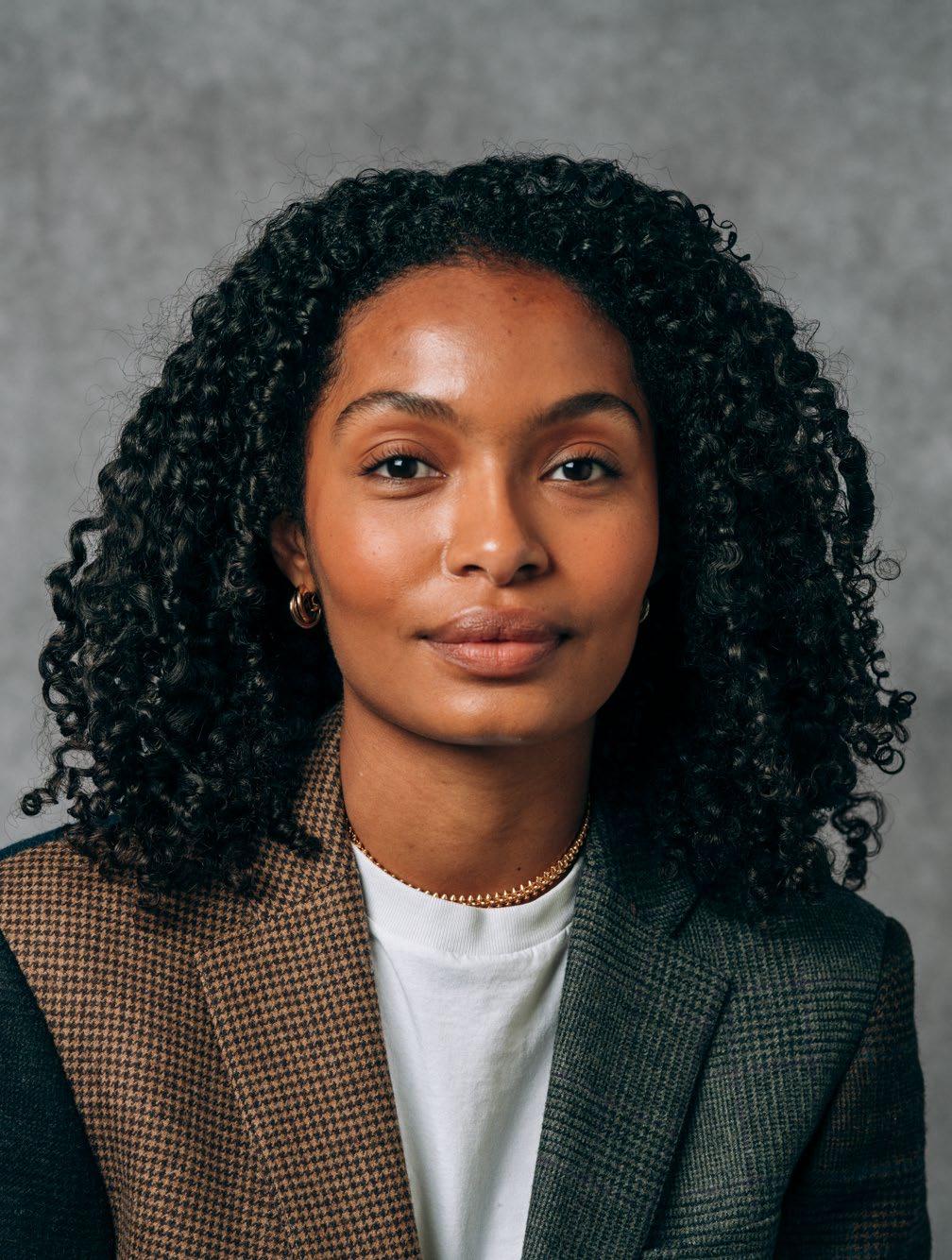
3. Ibtihaj Muhammad
As an Olympic fencer and the first Muslim American woman to compete in the Olympics while wearing a hijab, Ibtihaj Muhammad is breaking stereotypes in sports and beyond. She is also a vocal advocate for inclusivity and representation in fashion, launching her clothing line that celebrates modest fashion. Muhammad’s journey inspires women of color to pursue their passions unapologetically.
4. Stacey Abrams
Political activist and former minority leader of the Georgia House of Representatives, Stacey Abrams has played a crucial role in voter registration and civil rights advocacy. Her fashion sense, which includes bold colors and patterns, reflects her vibrant personality and commitment to her cause. Abrams continues to inspire minority women to engage in politics and work toward social justice.
5. Geena Rocero
Model and LGBTQ+ advocate Geena Rocero is known for her work in the fashion industry and her efforts to raise awareness about transgender rights. As a Filipina-American, she uses her platform to advocate for representation and inclusivity. Rocero’s style is a blend of high fashion and cultural heritage, making her a symbol of empowerment for marginalized communities.
6. Ayo Tometi

Co-founder of the Black Lives Matter movement, Ayo Tometi is a powerful voice in social justice advocacy. Her work has highlighted the importance of intersectionality in the fight for civil rights. Tometi’s fashion choices often feature bold, statement pieces that reflect her commitment to activism and her cultural identity, proving that style can be a form of expression and resistance.
7.Vanessa Williams
An accomplished actress, singer, and former Miss America, Vanessa Williams has used her platform to advocate for diversity and inclusivity in the entertainment industry. Her fashion sense often blends elegance with cultural nuances, showcasing her multifaceted identity. Williams inspires minority women to embrace their heritage while excelling in their careers.
8.Saira Rao
Co-founder of the nonprofit Race2Dinner and an outspoken advocate for racial justice, Saira Rao has made significant contributions to the conversation around race and gender in America. Her candid discussions and activism aim to create a more equitable society. Rao’s fashion choices often reflect her bold personality, utilizing vibrant colors and unique designs that challenge conventional norms.
9.Yara Shahidi
Actress and activist Yara Shahidi is a prominent voice for young people in politics and social justice. Through her organization, Eighteen x 18, she encourages youth engagement in the electoral process. Shahidi’s fashion sense, which blends contemporary styles with cultural influences, serves as an inspiration for young women everywhere to express themselves through their clothing.
10.Noor Tagouri
A journalist and activist, Noor Tagouri is known for her media work and advocacy for Muslim representation. She has become a role model for young women, particularly those from minority backgrounds, by challenging stereotypes and promoting positive narratives. Tagouri’s fashion sense incorporates both modern trends and modest styles, making her a significant figure in the conversation around diversity in fashion.
These ten minority women are making their mark in the workplace, politics, and fashion and paving the way for future generations. By embracing their identities and advocating for change, they inspire us to celebrate diversity, encourage inclusivity, and strive for excellence in all facets of life. As we continue to learn from their journeys, it’s clear that the intersection of race, gender, and personal style is a powerful force for transformation.
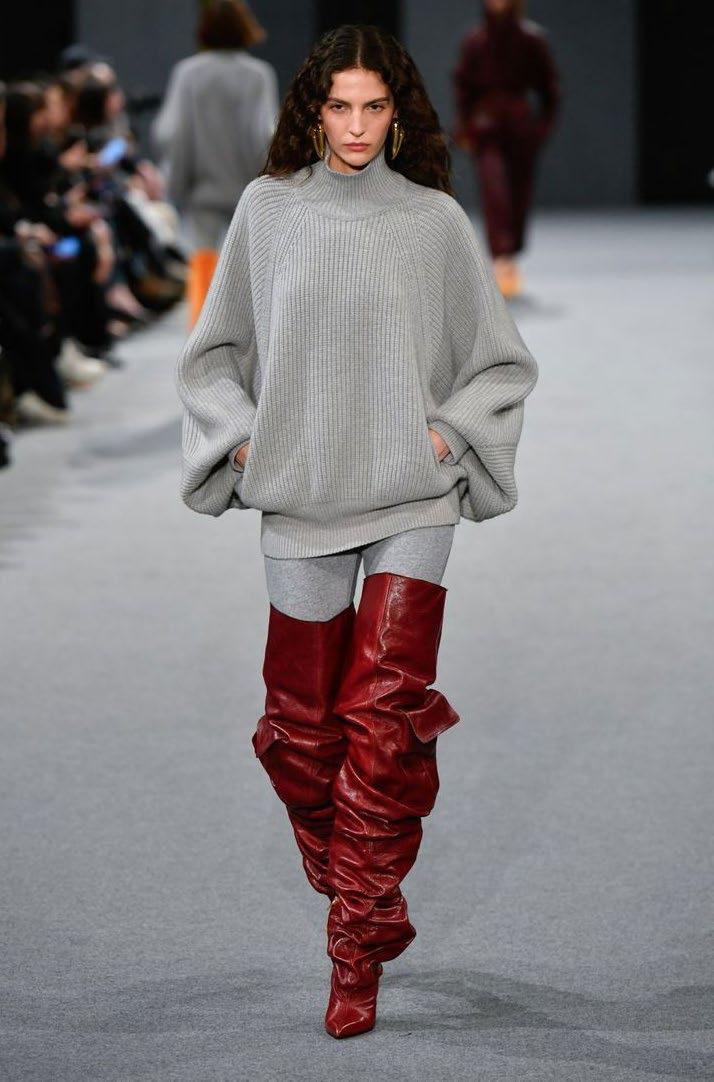

FALL FASHION FINDS
MusT-have pieces:
1. Chunky Knit Sweaters: Cozy and chic, perfect for layering.
2. Tailored Blazers: Elevate any outfit, from jeans to dresses.
3. Wide-Leg Trousers: Comfortable yet stylish; a versatile choice.
4. Ankle Boots: A staple for every fall wardrobe; go for leather or suede.
5. Midi Dresses: Flowy and feminine, ideal for transitioning from day to night.

color Trends:
- Earth Tones: Think rich browns, burnt oranges, and deep greens.
- Bold Jewel Tones: Sapphire blue and emerald green are in!
- Classic Neutrals: Black, white, and grey remain timeless.
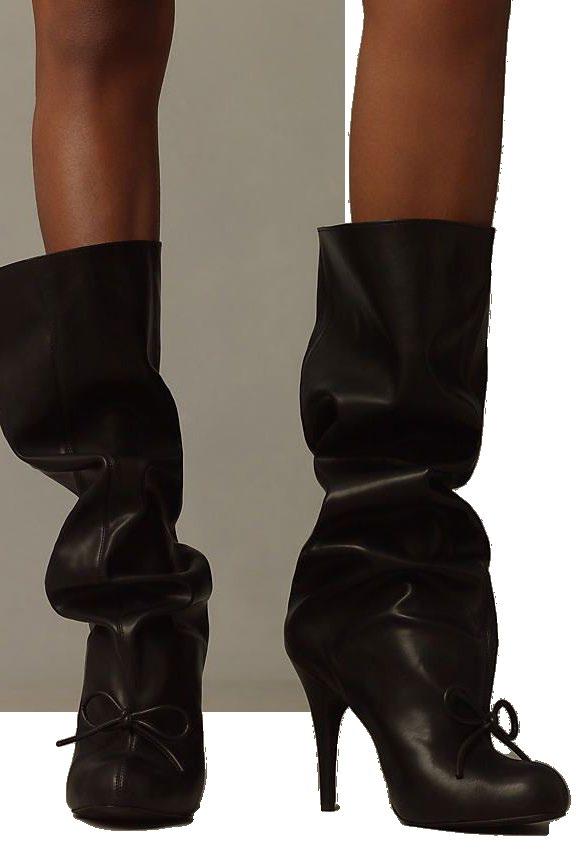
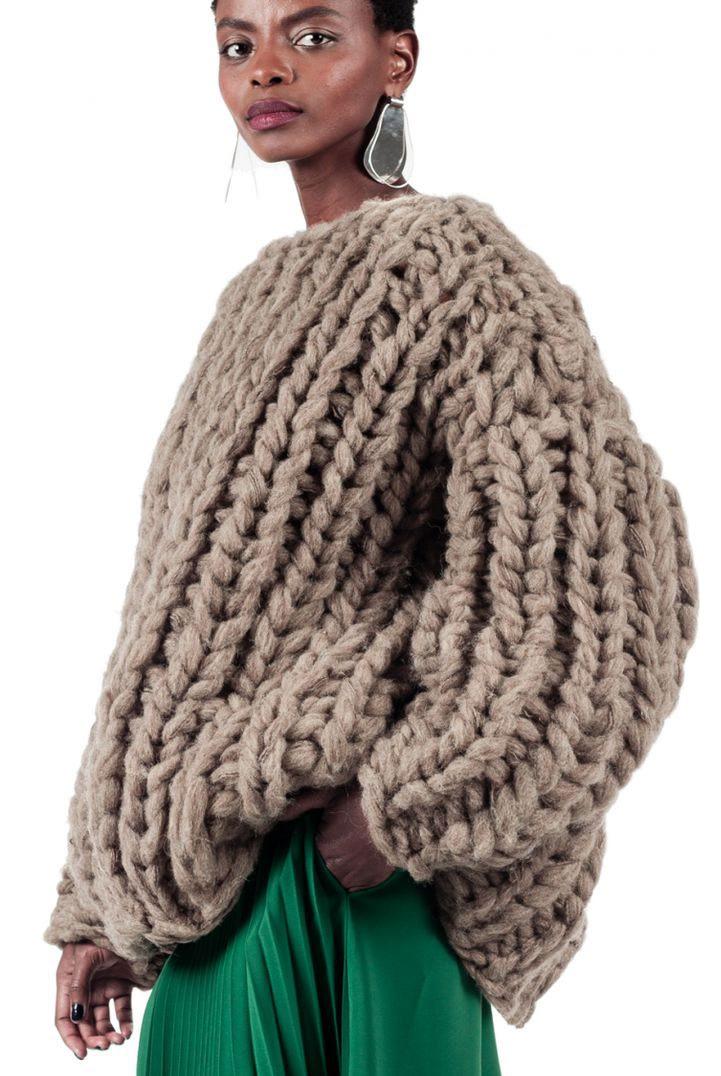
Layering is key this season! Mix textures and lengths for a dynamic look that keeps you warm and stylish.
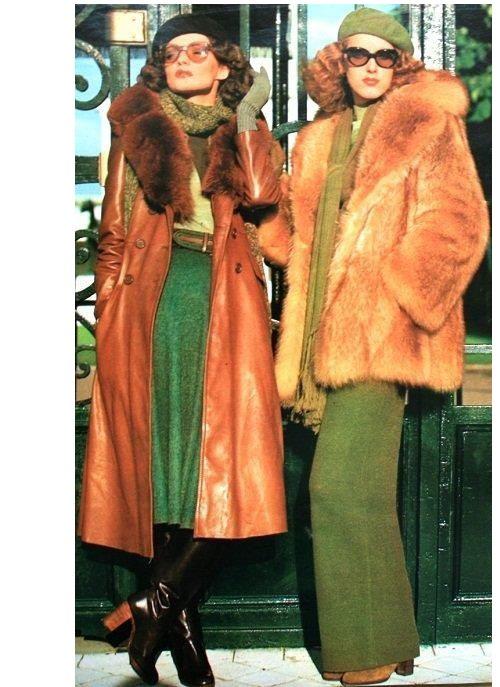
T rending n ow :

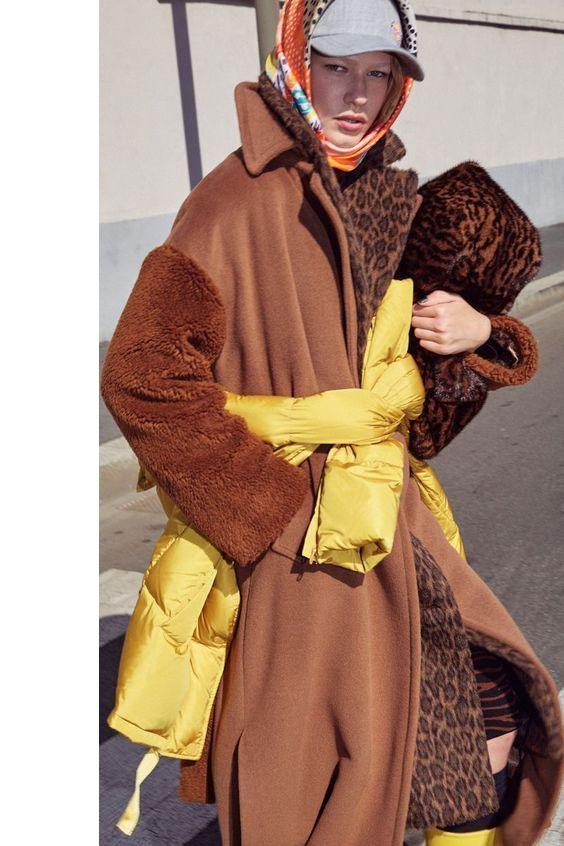
- Sustainable Fashion: Brands focusing on eco-friendly materials and practices are gaining popularity.
- Vintage Revival: Thrifted finds and retro styles are making a comeback.

HUGE
